When it comes to XPeng’s star product, you would definitely think of the P7, as it took the brand and sales of XPeng to a higher level.
By 2023, as a product focusing on intelligence, the XPeng P7 underwent a major facelift, upgrading to the 8155 in-vehicle chip, adding two LiDAR units, and augmenting its assisted driving computing power by more than 8 times; the model was also renamed P7i. Prior to this, we had test-driven the new P7i on different tracks but hadn’t conducted systematic tests on its actual endurance and basic performance.
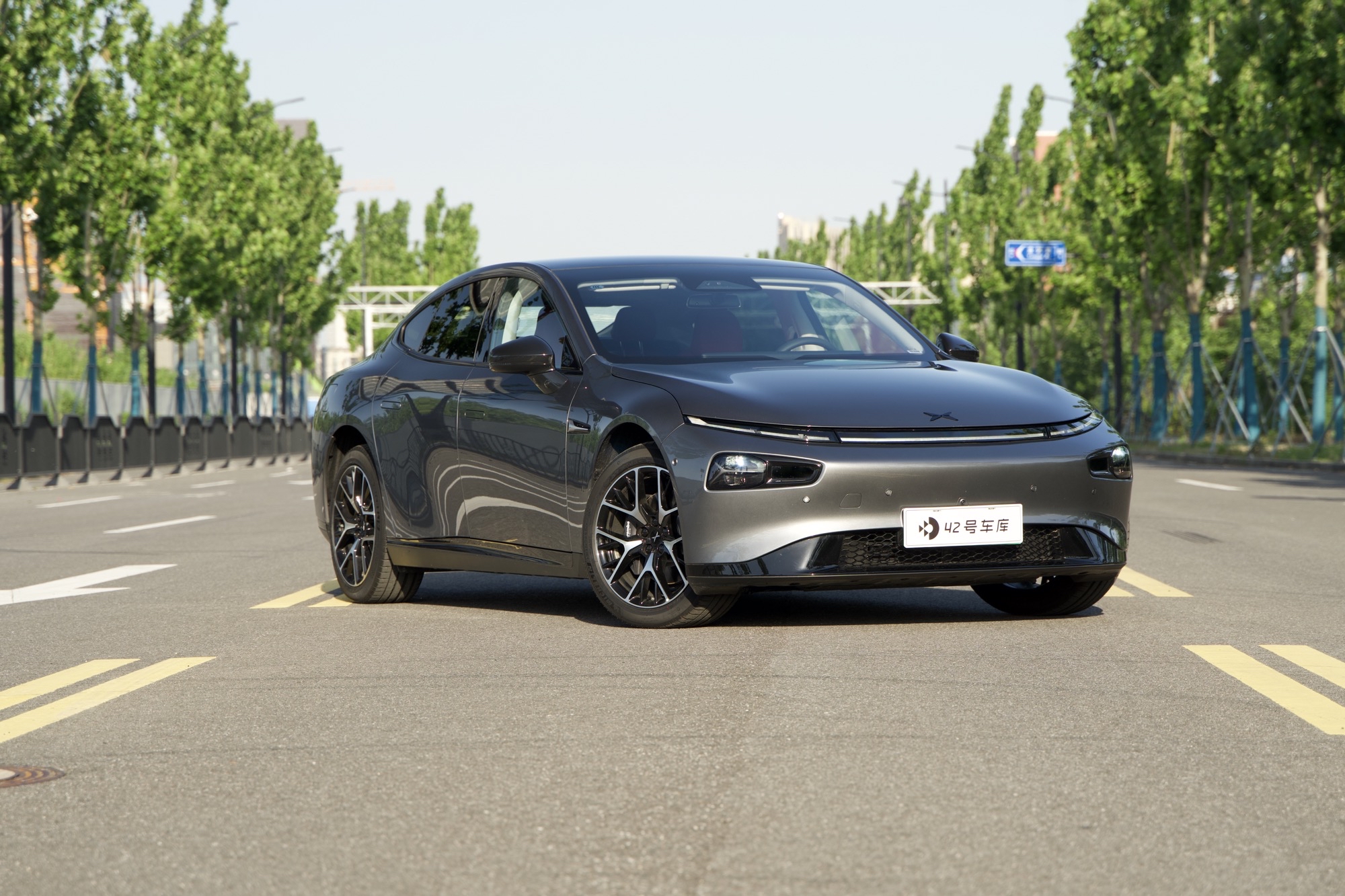
In this 42Test edition, we invited the XPeng P7i 610 Max Performance version for a detailed test. This model is positioned as a sub-top dual-motor all-wheel-drive variant, featuring an 86.2 kWh ternary lithium power battery and a CLTC combined endurance mileage of 610 km.
The tested model is not the volume production version of the P7i; the lower-priced single-motor version has an equally sized power battery and a CLTC combined endurance mileage of 702 km, though its power performance is not as strong.
Driving Experience: Sufficient absolute performance, comfortable for daily driving
The XPeng P7i we tested features a rear-axle permanent magnet synchronous motor with a maximum power of 203 kW and a maximum torque of 440 N·m; the front axle features an induction asynchronous motor with a maximum power of 145 kW and a maximum torque of 317 N·m. The system has a combined maximum power of 348 kW and a maximum torque of 757 N·m.
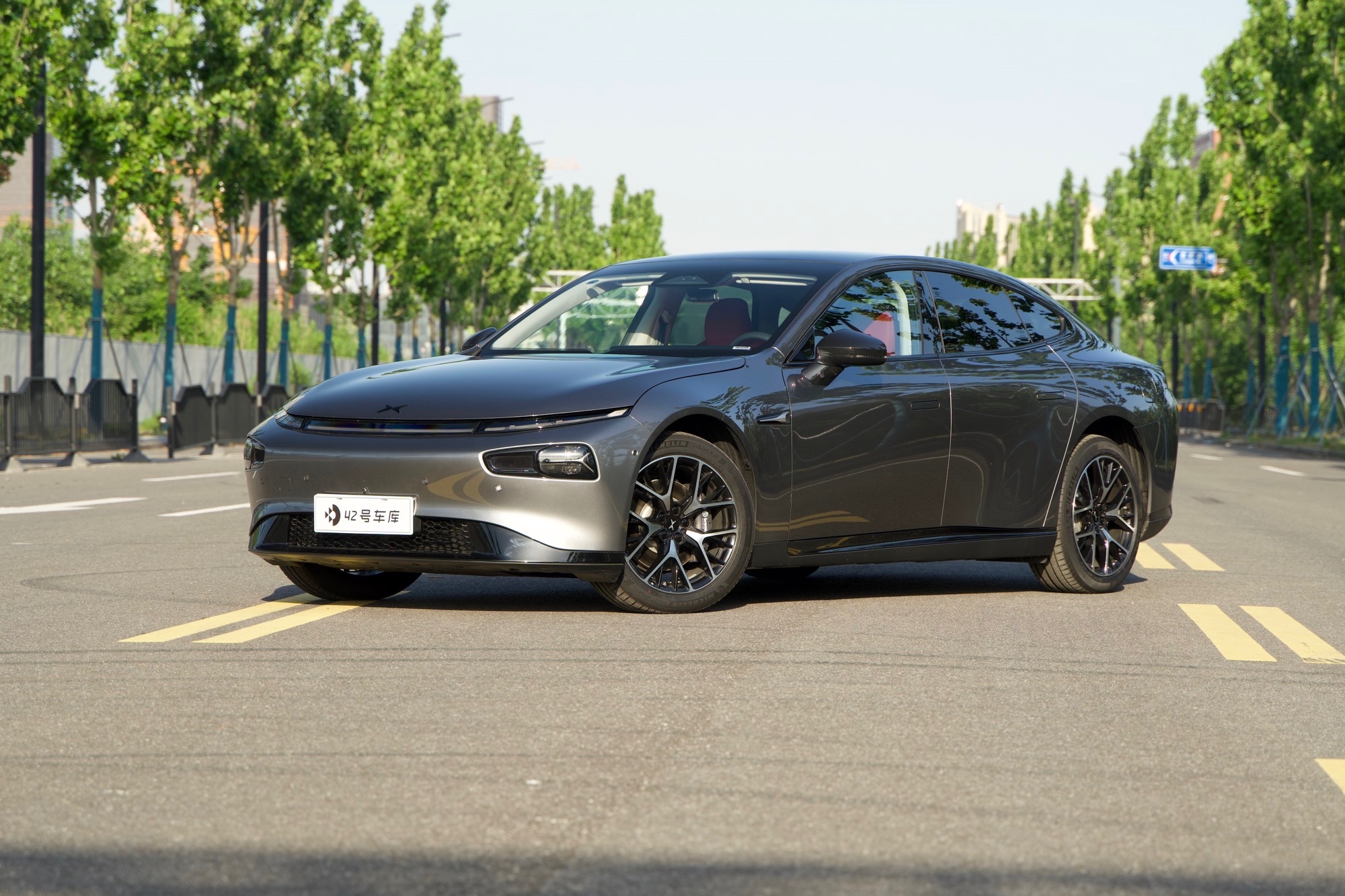

Regarding the dynamic performance of the XPeng P7i, we had a detailed experience at the Machong circuit in Dongguan, Guangdong. Interested friends can follow this video “Xpeng P7i Thrills on the Track”.
Acceleration & Braking Performance
XPeng officially claims the 0 – 100 km/h acceleration time of the P7i to be 3.9 seconds. Under 26°C temperature, our measured fastest zero-to-hundred acceleration was 4.0 seconds, which is essentially in line with the official data. It is also worth noting that we conducted 10 consecutive acceleration tests, and the P7i’s hundred-kilometer performance remained stable at 4.1 seconds without any decline, showing an excellent performance.
 We then conducted braking tests under the condition with a temperature of 28°C. The shortest braking distance for the XPeng P7i from 100 km/h to 0 was 35.7 meters. As seen in the data table, during the 7 continuous braking tests, the P7i experienced decaying braking performance, but returned to normal levels after the braking system cooled down.
We then conducted braking tests under the condition with a temperature of 28°C. The shortest braking distance for the XPeng P7i from 100 km/h to 0 was 35.7 meters. As seen in the data table, during the 7 continuous braking tests, the P7i experienced decaying braking performance, but returned to normal levels after the braking system cooled down.
Overall, the braking performance of the XPeng P7i was not very stable, with a difference of 4.9 meters between the shortest and longest braking distances during the first 7 continuous tests.
In fact, the hardware qualities of the P7i’s tires and braking system are quite good.
The tires are outfitted with Michelin Pilot Sport 4, all four of which have the same size dimensions: 245/45 R19 102W. These tires have a speed rating of 270 km/h and a load capacity of 850 kg per tire, satisfying the needs of car owners.
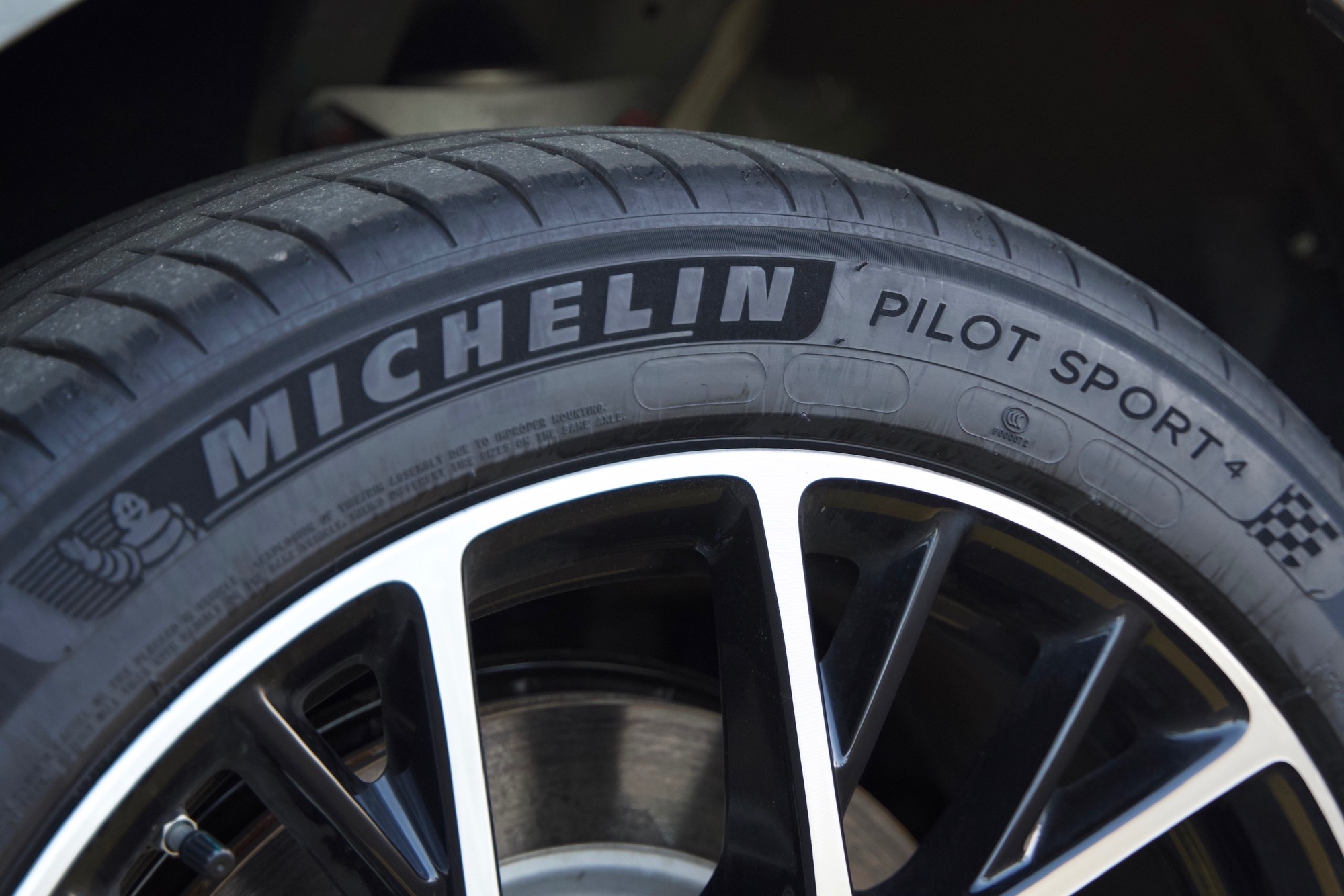

The braking system is also well-configured, featuring four-piston Brembo calipers on the front wheels, and ventilated Brembo brake discs on all four wheels.
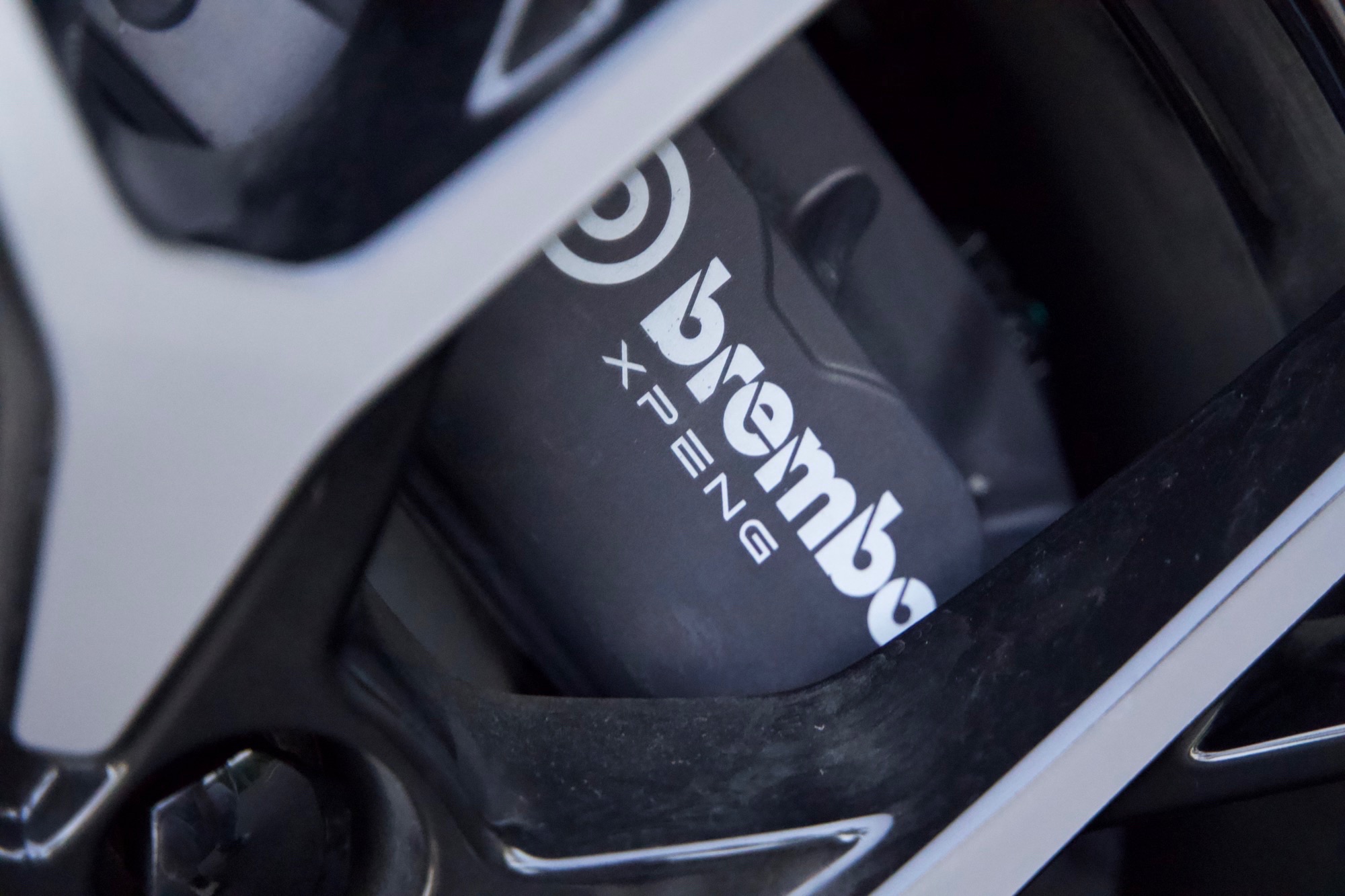
Daily Driving Experience
The XPeng P7i delivers exceptional performance in terms of absolute power, with the more powerful racing mode being better suited for hill climbing or racing. For everyday driving, standard or comfort modes may be better choices.
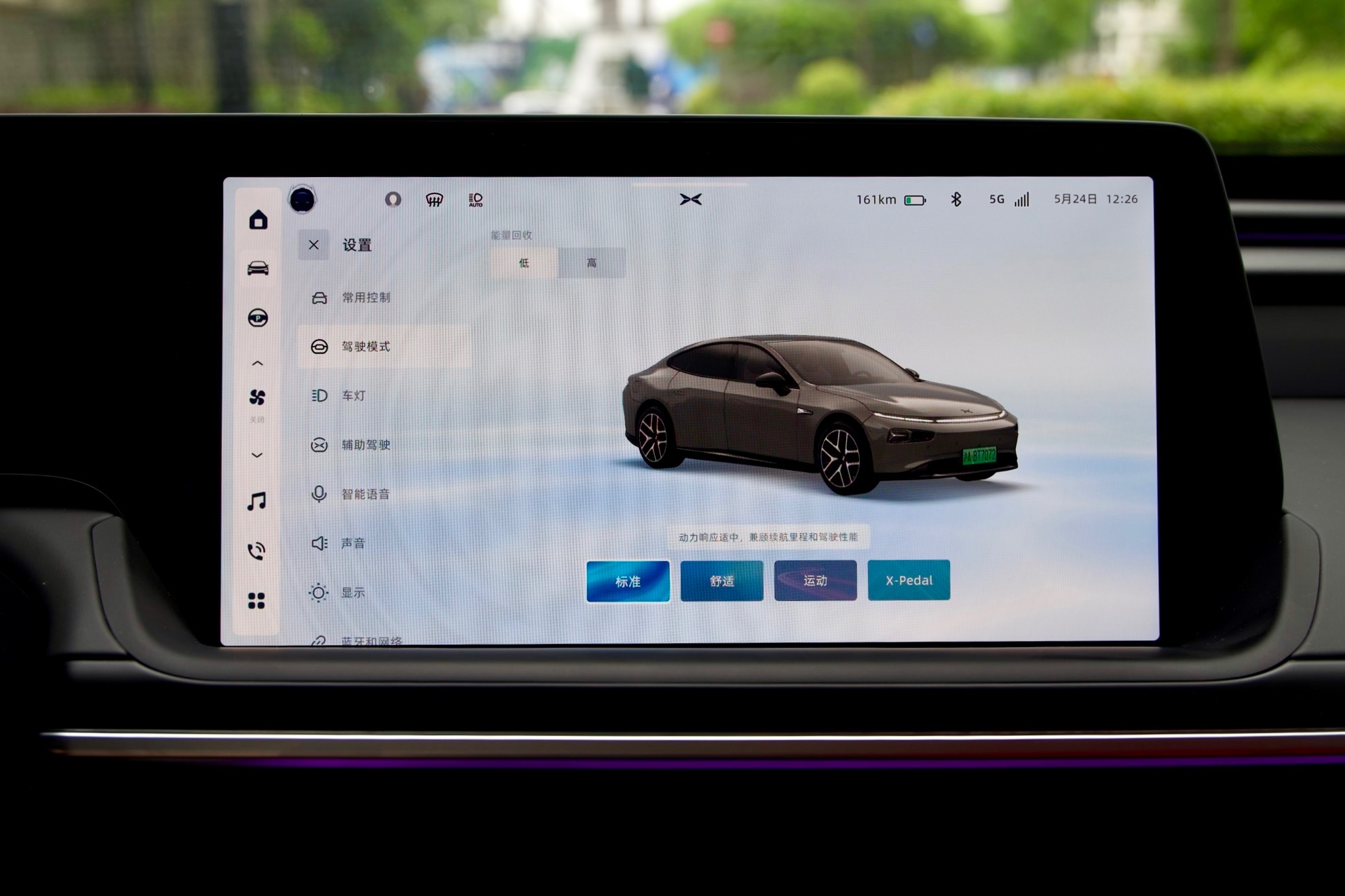
The overall daily driving experience leans more towards sporty, with responsive throttle and brakes. The steering feels light at low speeds and becomes more stable at high speeds. However, if the steering mode is set to sport, it might feel more electronic.
The suspension and damping are also relatively sporty. The ride is comfortable at high speeds and over bumps, but the chassis tends to shake more at low speeds. Nevertheless, the overall tuning is satisfactory.
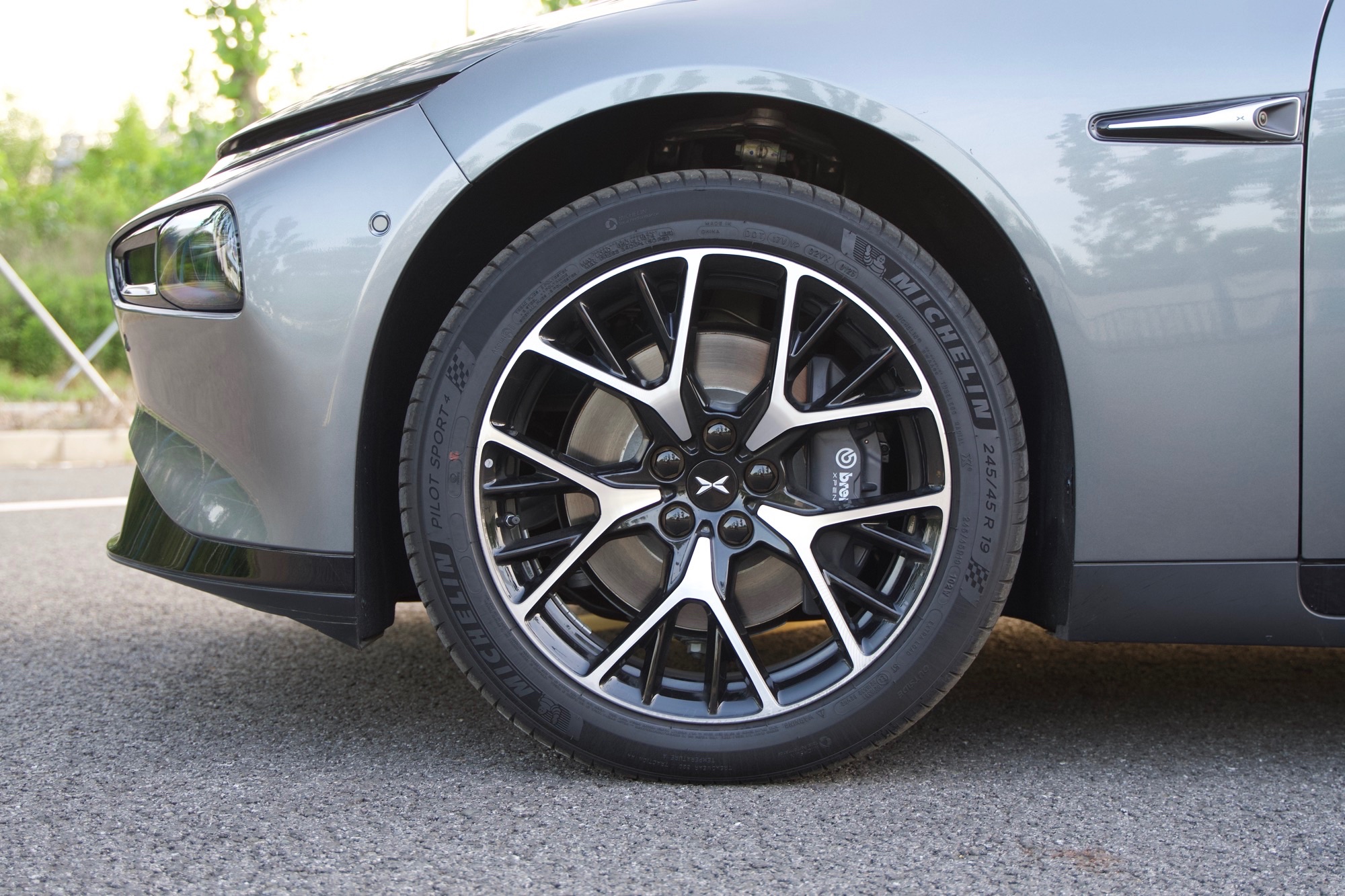
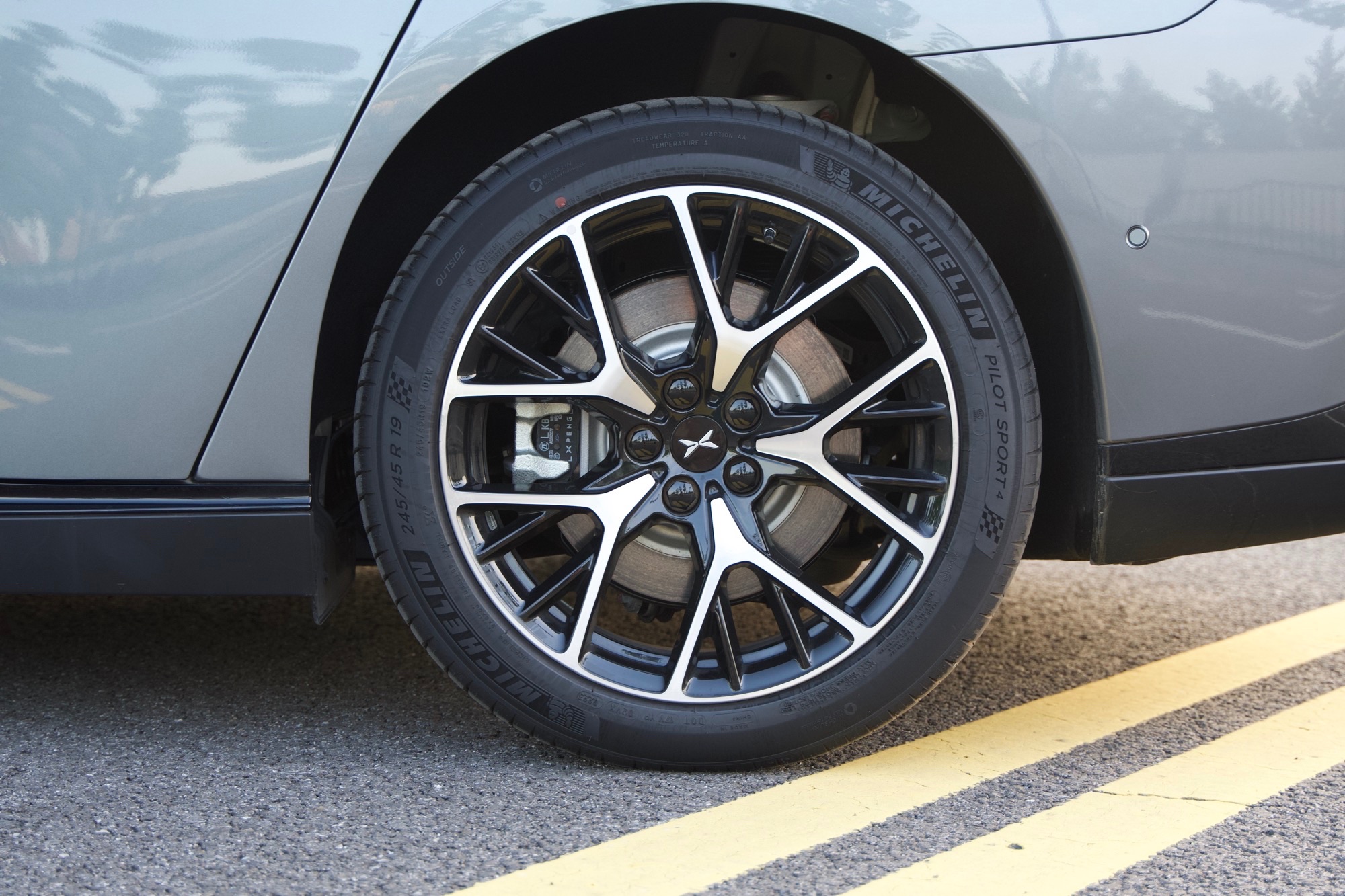
In conclusion, the XPeng P7i can meet the daily commuting needs of urban life with an impressive driving experience.
NVH Performance
From a hardware standpoint, the XPeng P7i is equipped with single-layer glass. Will its noise performance be inadequate?
 The answer is not as simple as that.
The answer is not as simple as that.
During the noise level test, we closed all windows, air conditioning, speakers, seat massages, driving assistance, and other noise features, and emptied any items in the car to ensure accurate testing results. We then drove on a closed road at speeds of 0, 60, 80, 100, and 120 km/h, taking three average samples of the noise level at the driver’s ear for each speed.
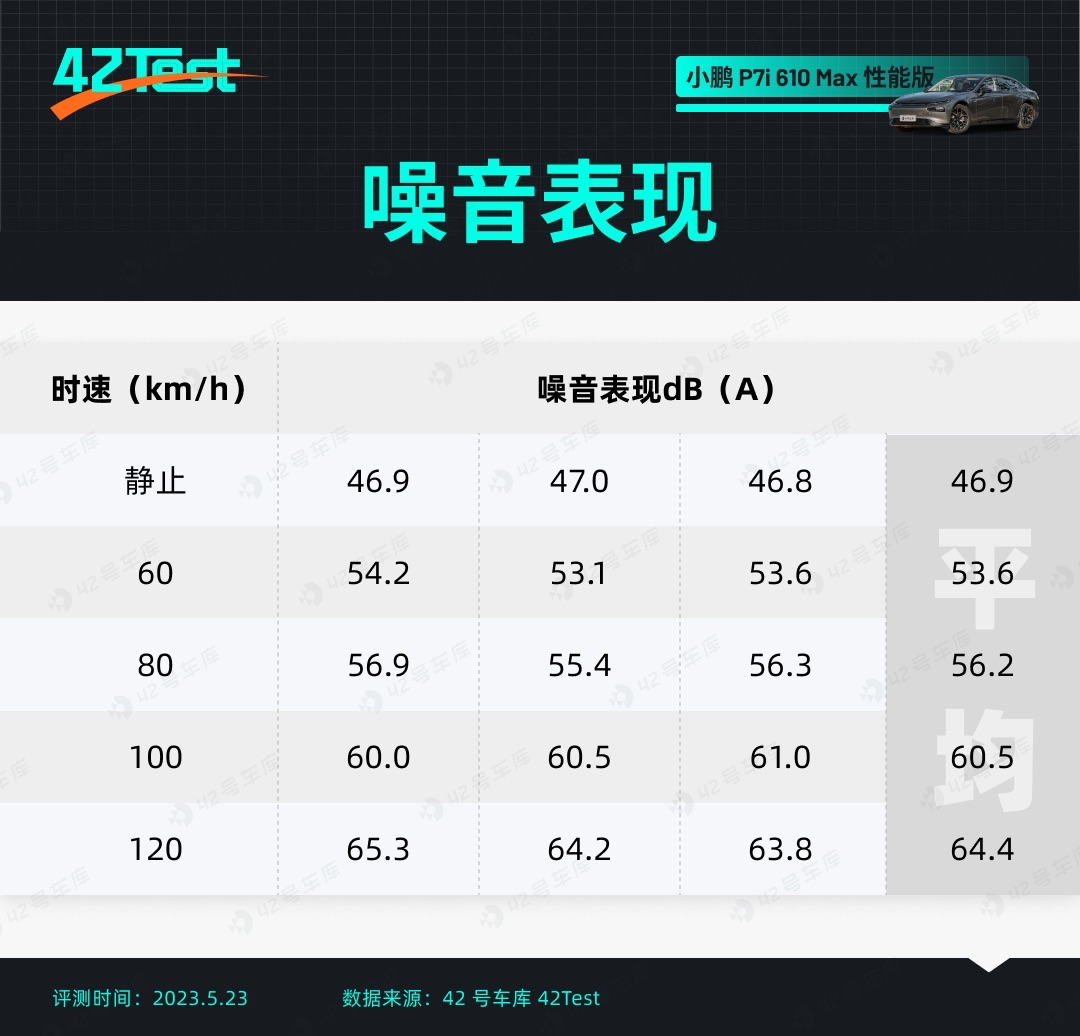
As we can see, the noise performance of the XPeng P7i did not suffer significantly due to the use of single-layer glass, especially at a speed of 120 km/h, where the noise levels were quite impressive.
Range Test: Excellent Energy Consumption Performance
With recharging and refueling still difficult these days, the range capability is a basic quality of a purely electric vehicle. Before testing, I was prepared for the possibility that the four-wheel-drive version of the XPeng P7i could have a limited range due to the increased energy consumption of the dual motors.
Highway Range: Accurate Display of Range
However, the actual situation was clearly better than expected. We conducted the highway range test under a 29°C temperature, with the air conditioning set to 22°C and 2 levels of wind. We turned on the A/C, with the front and rear tire pressures at the standard values of 2.7 Bar and 2.9 Bar, respectively. We set the driving mode to “Standard” and adjusted the energy recovery to “High.”
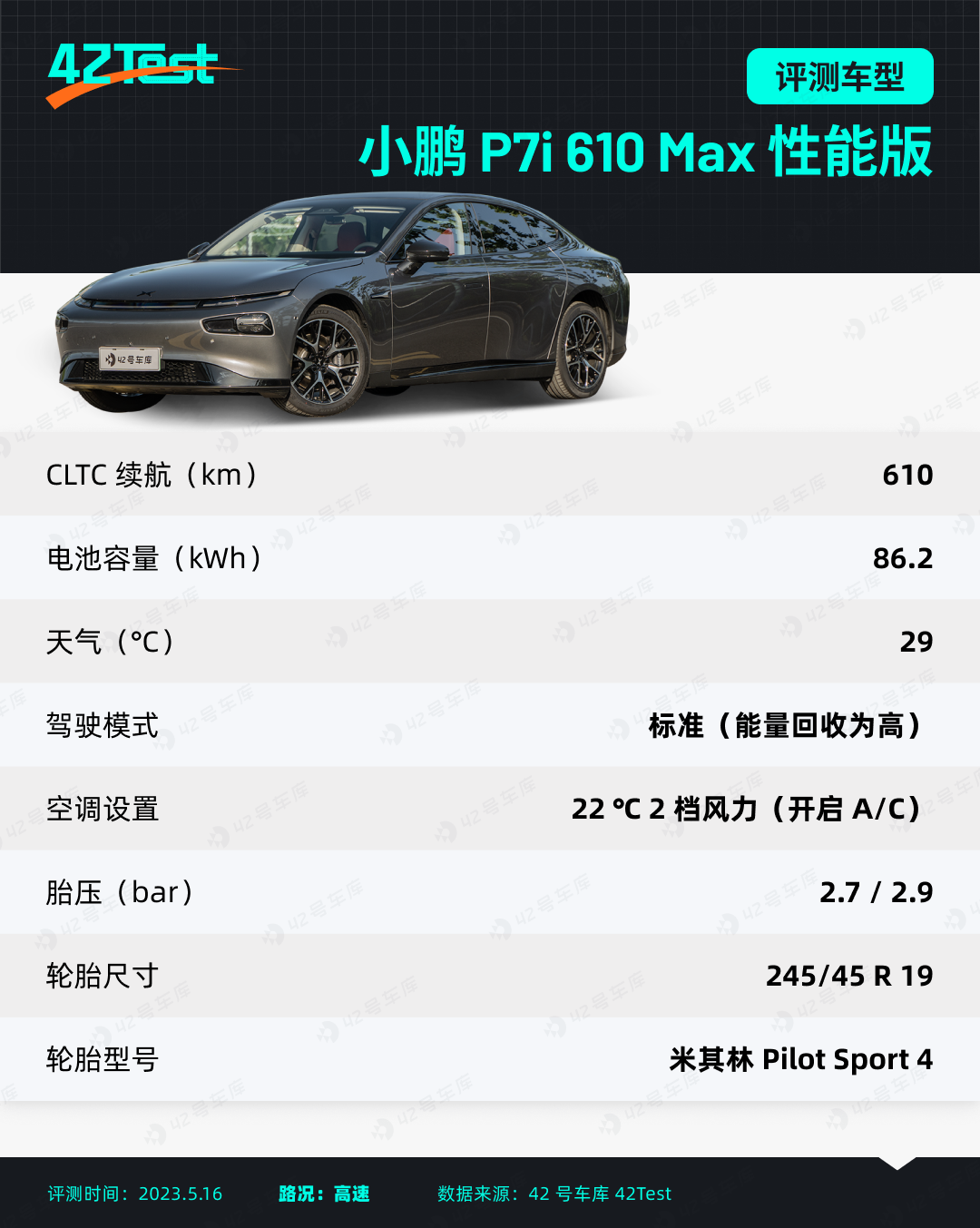
Under these test conditions, we completed a 464.1 km highway range test, and at the end of the test, we had an estimated 26.1 km remaining range under the WLTC standard.

This result is quite good – if instrument panel range is displayed under the WLTC cycle, the ratio of displayed range to actual range is 1:1.03, which means the displayed and actual ranges are very close. Based on this ratio, the theoretical full-charge range of the XPeng P7i 610 Max Performance Edition should be 489 km.
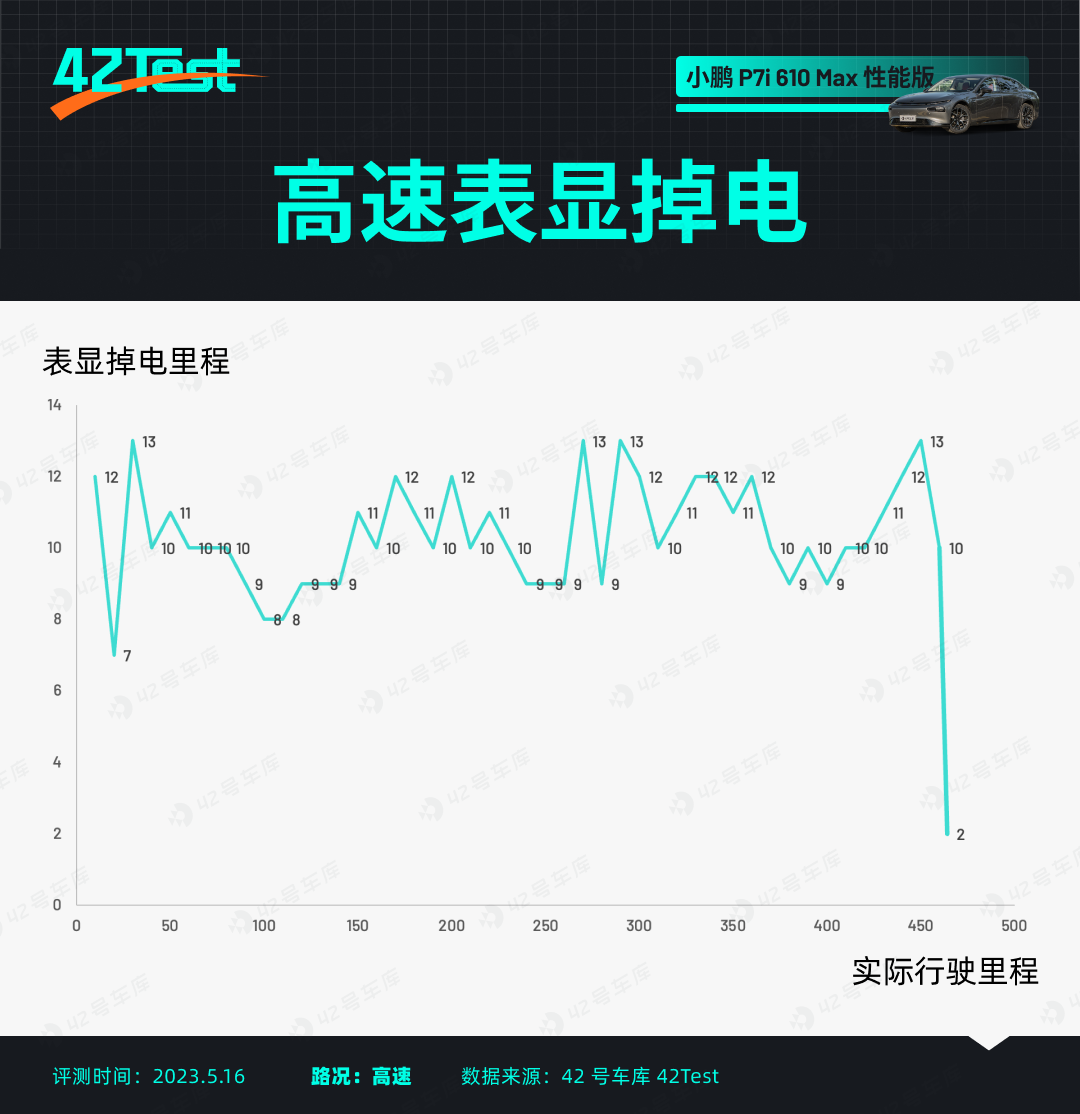
On the day of the test, the highway route was relatively smooth, with a total time of 5 hours 22 minutes and an average speed of 87 km/h, which is in line with typical daily usage scenarios.
Urban Range: Higher Power Consumption
After fully charging, we conducted a 150 km urban range test. According to 42Test’s testing standards, the urban range test consists of 2 parts: a 50 km ground route passing through major thoroughfares such as Dingxi Road, Century Avenue, Xuhui Riverside, and Wukang Building; and a loop around the complex traffic conditions of the perennially congested Outer Ring Highway, totaling 100 km.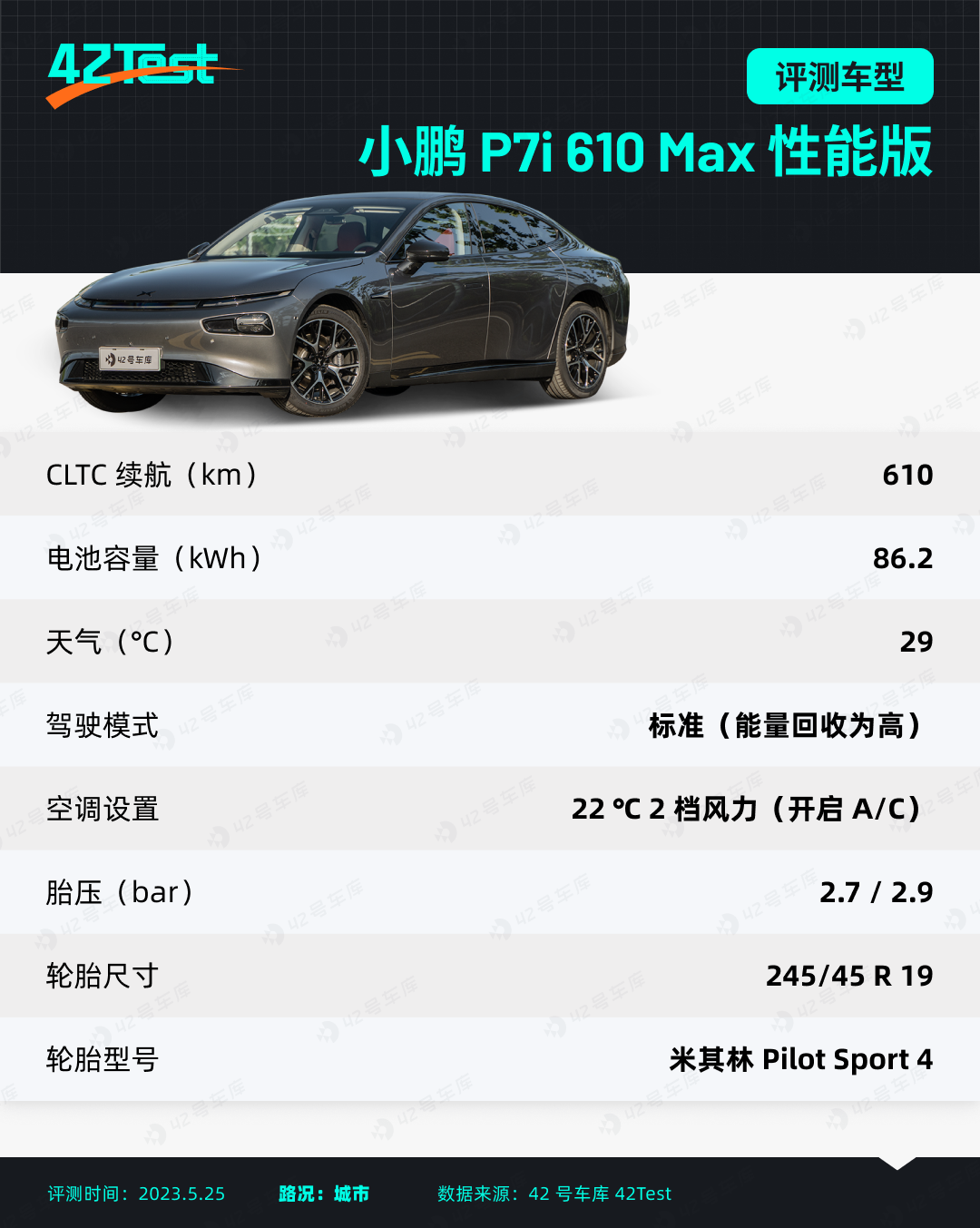
Throughout the test, our average speed was 36 km/h, taking 250 minutes to complete the 150 km route. After the test, we found that the displayed range of the XPeng P7i had decreased by 141 km, indicating that the displayed range was slightly underestimated during this test.
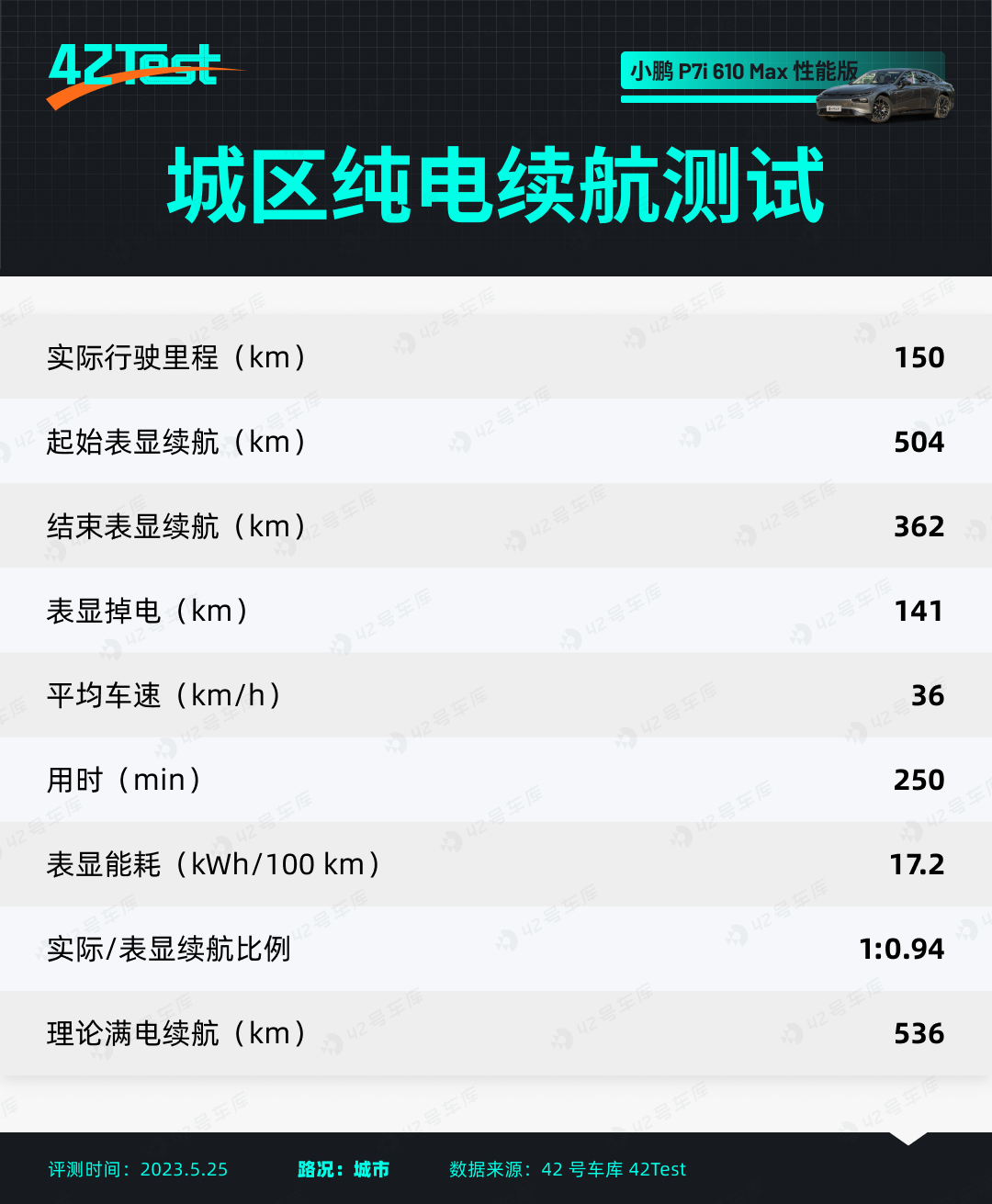
The energy consumption performance varies between highway and city driving. On the highway, the electric consumption is 17.1 kWh/100 km, while in the city, it is slightly higher at 17.2 kWh/100 km. The P7i is more energy-efficient on highways, whereas it consumes more energy in urban areas.

In summary, if you use the dual-motor four-wheel-drive version of the XPeng P7i as your daily commuter, its performance would be more than sufficient, while its energy consumption would be relatively high. However, during high-speed cruising, the vehicle is more energy-efficient, and the power output is more rapid, resulting in stronger acceleration and overtaking capabilities.
Charging Test:
Since the P7i is still equipped with a 400 V battery, we followed the 42Test standard and used a 120 kW charging station for the charging test.
It took 64 minutes for the XPeng P7i to charge from 5% to 95%, and just over an hour to fully charge. The maximum charging power reached 98.3 kW at 75% battery capacity, after which the charging power began to decrease. The charging power remained above 20 kW until the end, demonstrating excellent performance.

There is still some distance to the XPeng G9, which supports 800 V charging, but the gap is not significant. When tested under similar environmental temperatures and using the same 120 kW charging station, the maximum charging power of the XPeng G9 could reach over 120 kW. However, the charging time from 5% to 95% still reached 53 minutes. The charging speed would only see a significant improvement when using XPeng’s own charging stations.
Exterior and Interior: Minimal changes, upgraded experience
We have previously provided a detailed unboxing review of the XPeng P7i’s exterior and interior 《XPeng P7i Quick Unboxing》. We believe that after watching the video and reading the text, you will have a better understanding of this vehicle.Appearance: High Attractiveness
In terms of exterior design, the P7i has almost no difference from the older P7. However, I believe that the 2020 appearance design still looks beautiful today. First, let’s look at the vehicle’s length, width, height, and wheelbase. Compared with the old XPeng P7, there is no difference except for being 8 mm longer.

The front-through headlights, combined with the integrated laser radar, make this car without any abrupt elements. It is worth noting that some entry-level models of the XPeng P7i will not be equipped with laser radar, but there is no difference in the exterior design compared to the high-end models.
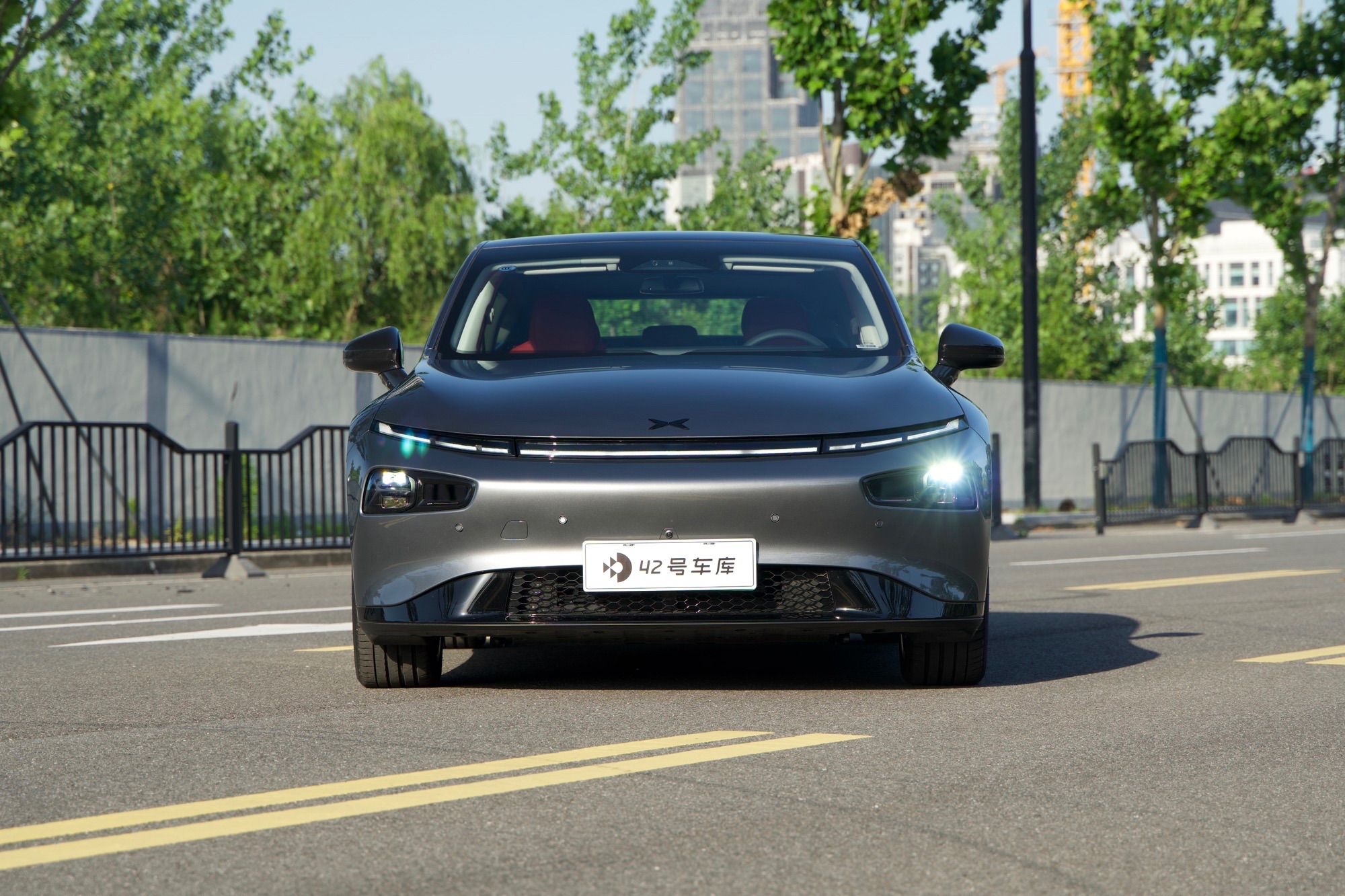
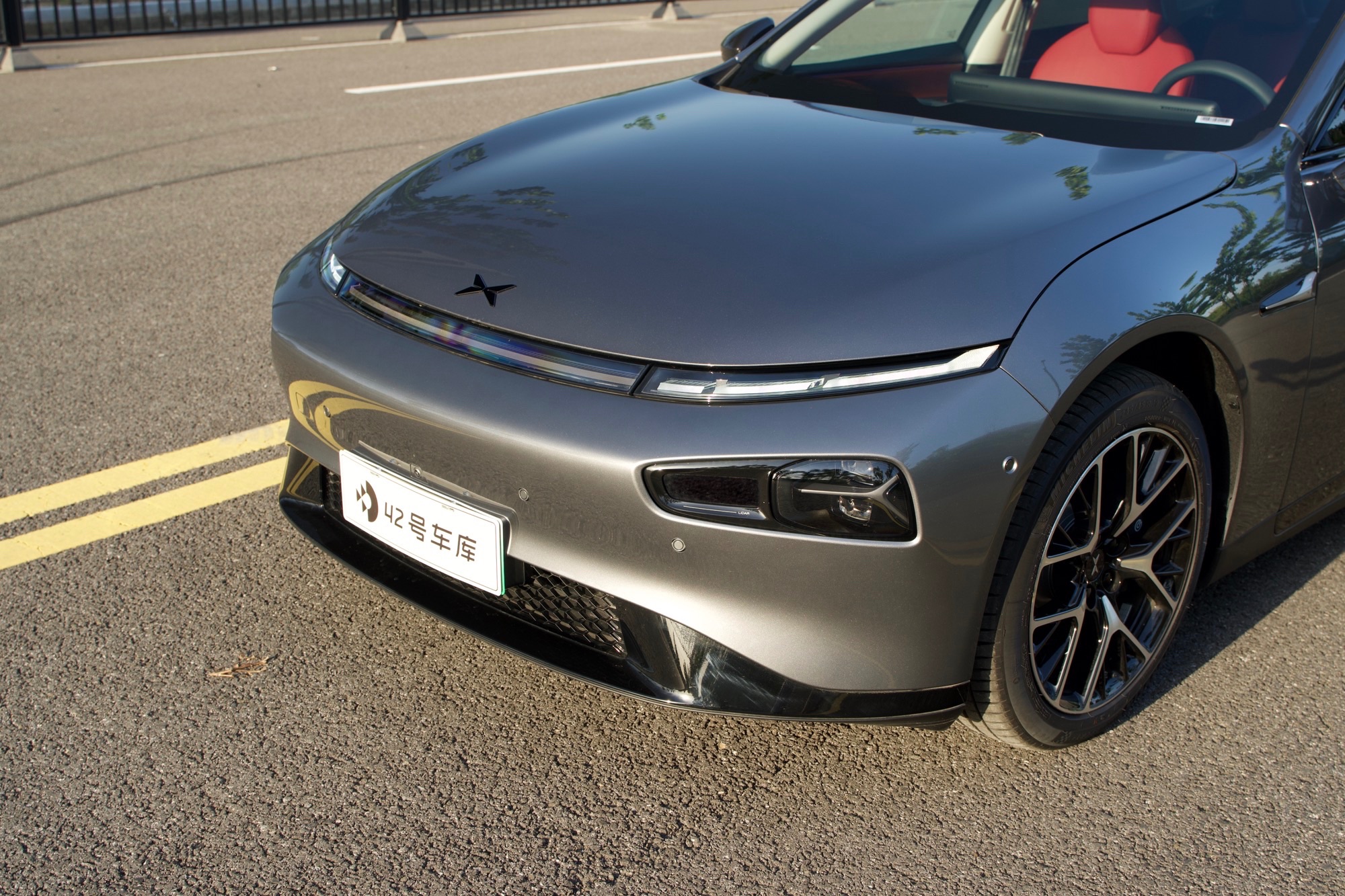

Looking at the body lines, they are also attractive, with a low-front and high-back coupe posture. Combined with the pop-out door handles, the car has a stronger sense of unity while driving.

At the rear of the car, there are also split-through taillights, which are still popular design elements. The four-wheel drive models also have an exclusive black badge, which matches the sky-gray body color better and adds a sporty touch to the entire vehicle.
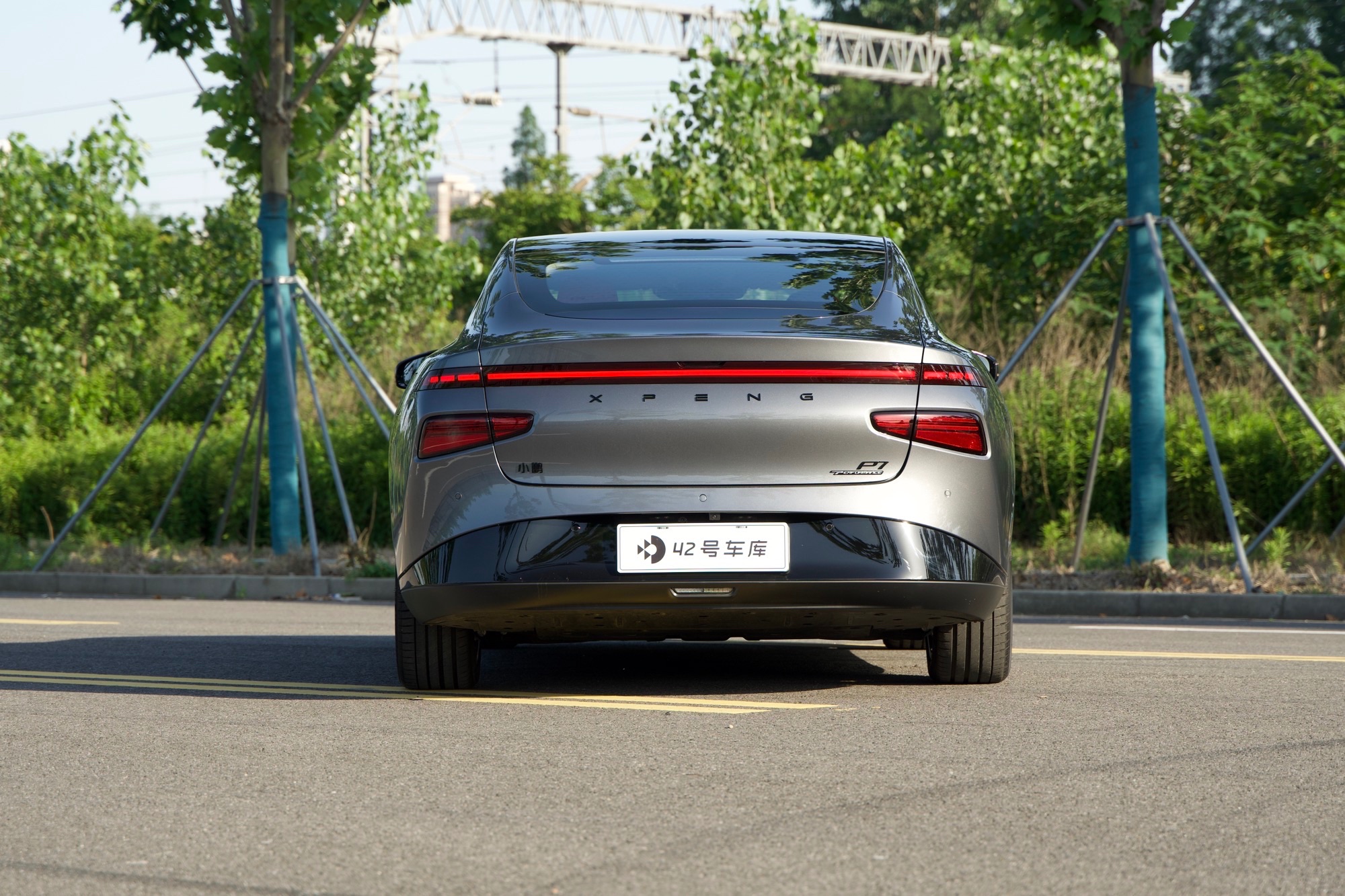

The XPeng P7i has DC and AC charging ports on the left and right sides of the body, respectively, and both are at the rear of the car, making it more practical for charging. However, a noticeable issue is that the charging port opening method is not intuitive, and it can be opened by voice, screen button, or mobile app. The intuitive method of pressing the charging port cover to open is not available on the XPeng P7i.
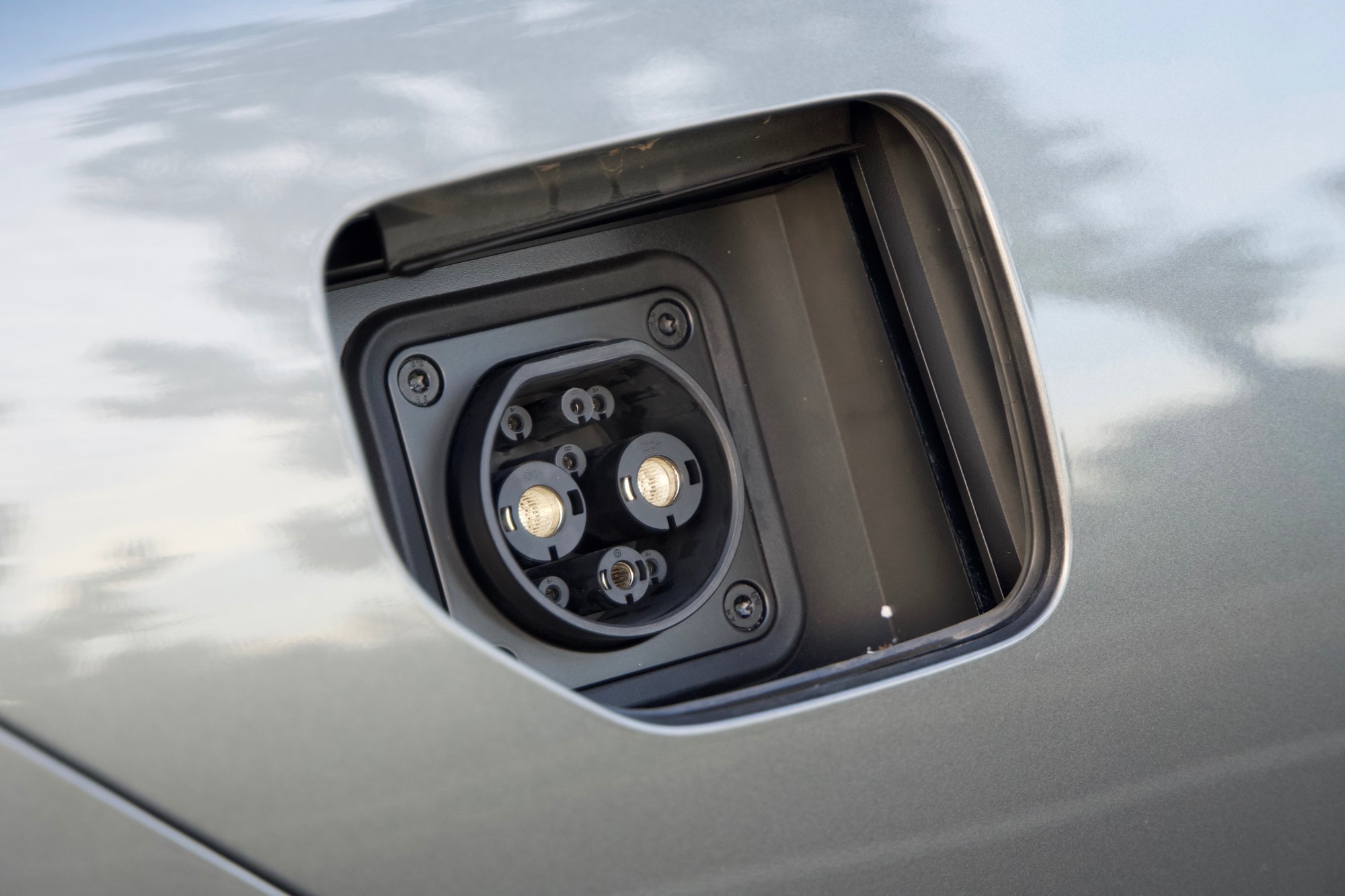
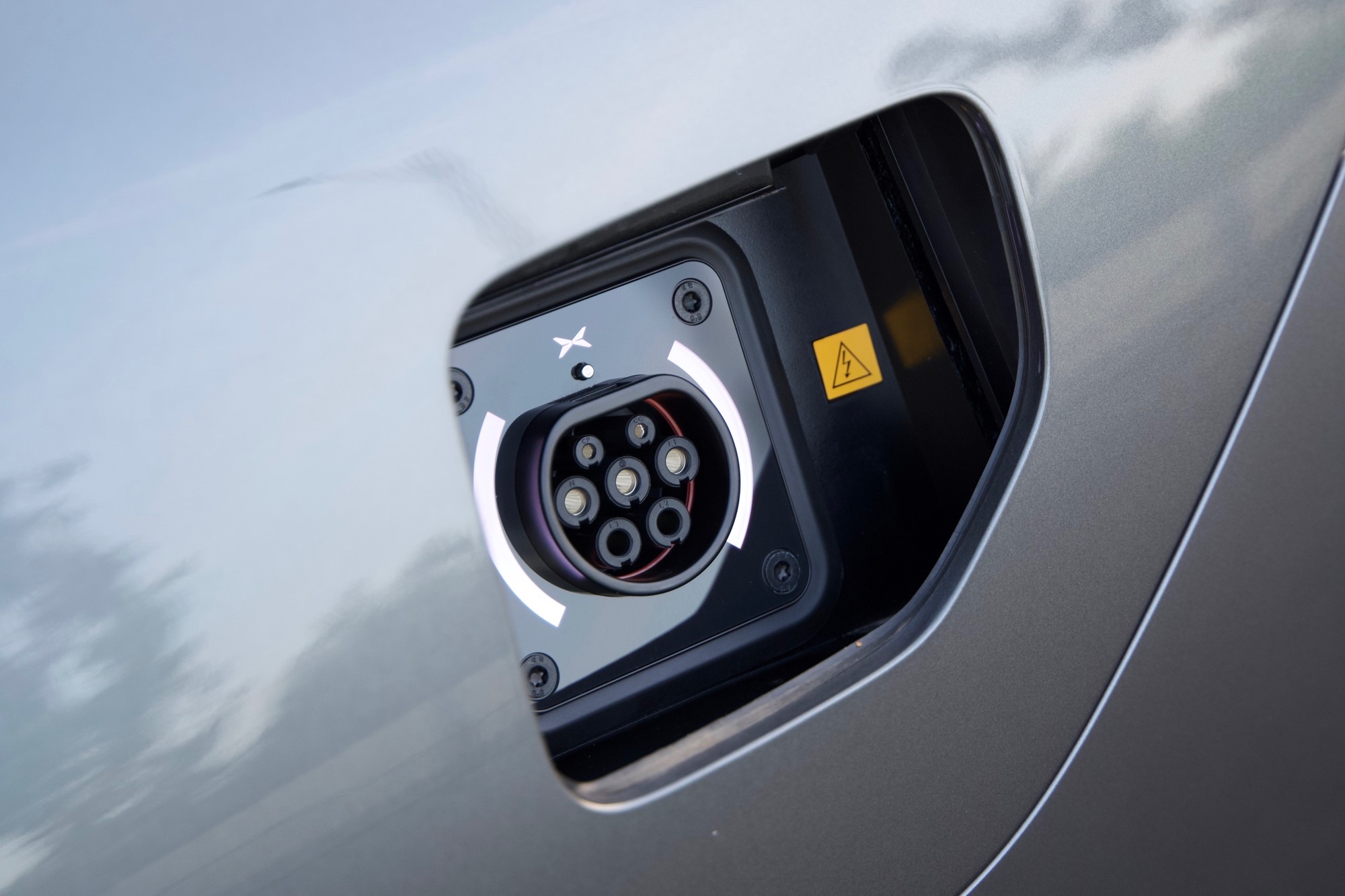
Similar un-intuitive opening methods were even more abundant in the old XPeng P7. On the XPeng P7i, this issue has been resolved, and a switch button has been added to the trunk lid, making it more convenient for daily use.
Interior: Minor Changes, Hardware Upgrades
Moving on to the interior, the XPeng P7i has a youthful design, and there are hardly any changes compared to the previous model.
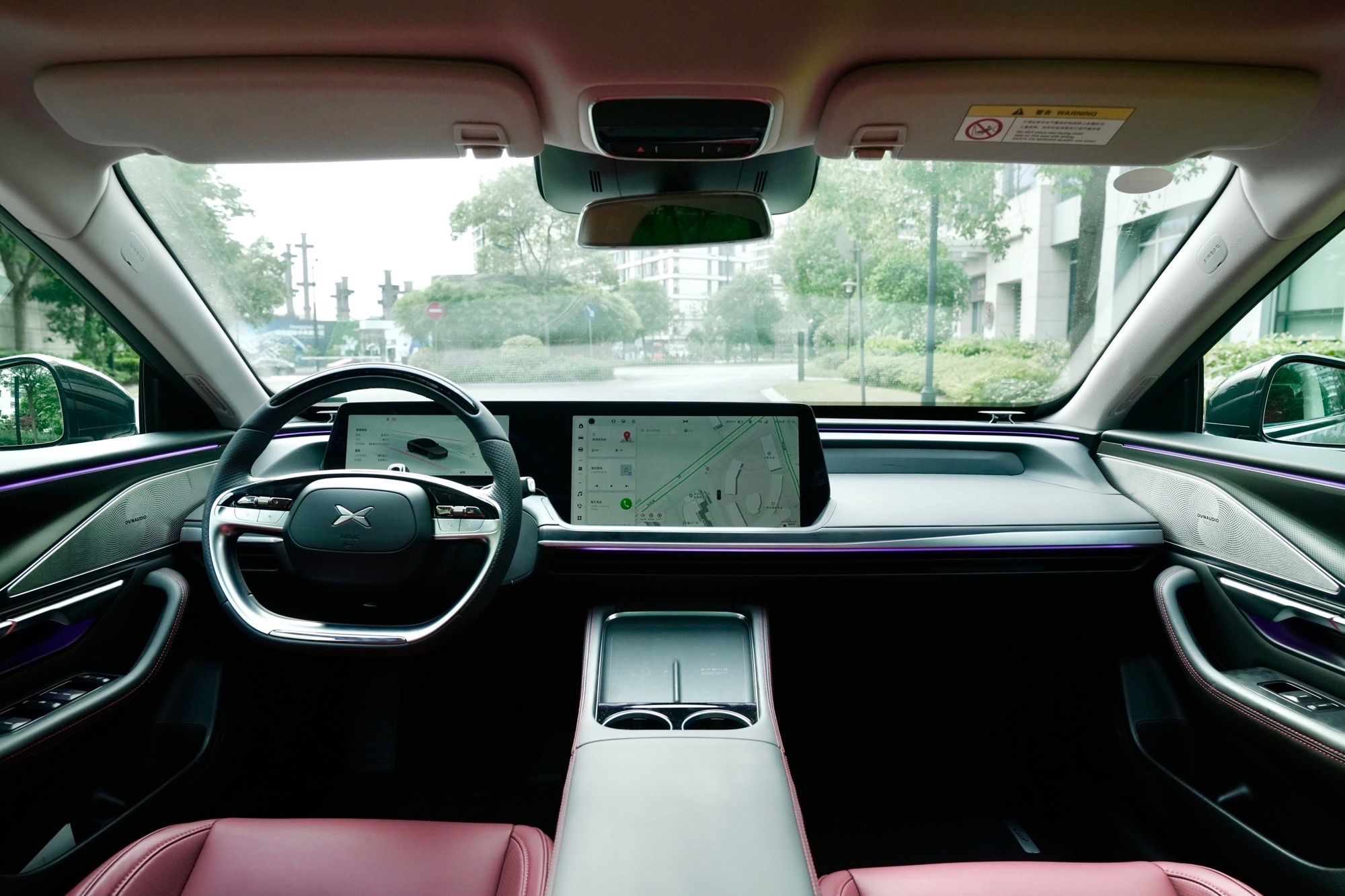
One significant change is the steering wheel, now featuring the same design as the G9 model. I’ve used the older XPeng P7 model before, and I’d often accidentally press the large buttons on the steering wheel while turning. I’m not sure if others have experienced this issue. Since switching to the new steering wheel, I haven’t encountered any accidental button presses during everyday use.
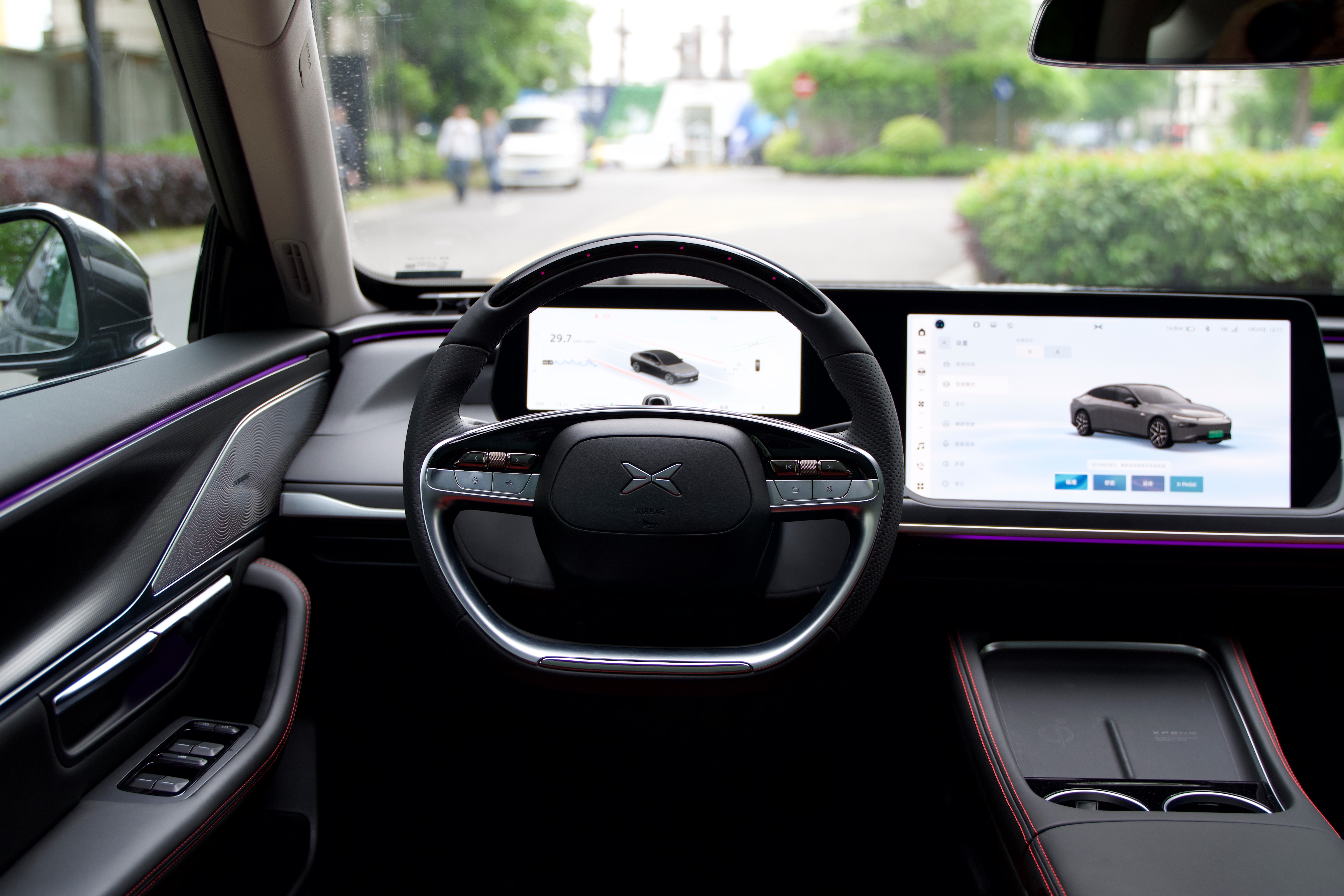


The two-tone design and the double-strip steering wheel shape are well-crafted. The upper half of the steering wheel features an infrared supplementary light for the DMS camera. However, this light is invisible to the human eye and not the same as the gearshift indicator light found in Ferraris.
The XPeng P7i has a Tesla-styled gearshift design; flicking it downward twice activates the assisted driving function, while flicking it upward or pressing the brake pedal cancels it.
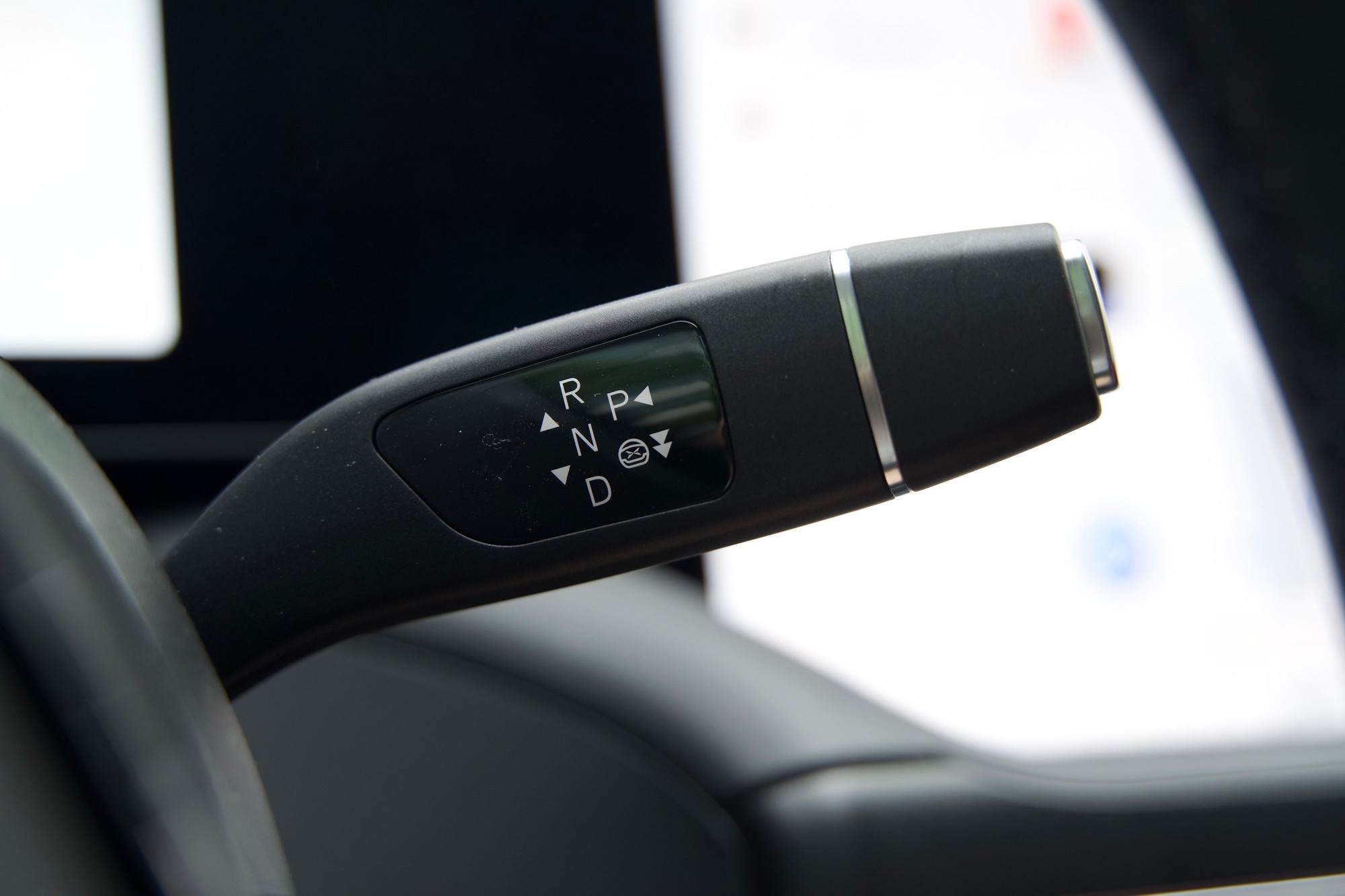
The left stalk integrates turn signals, high and low beams, and wiper functions.
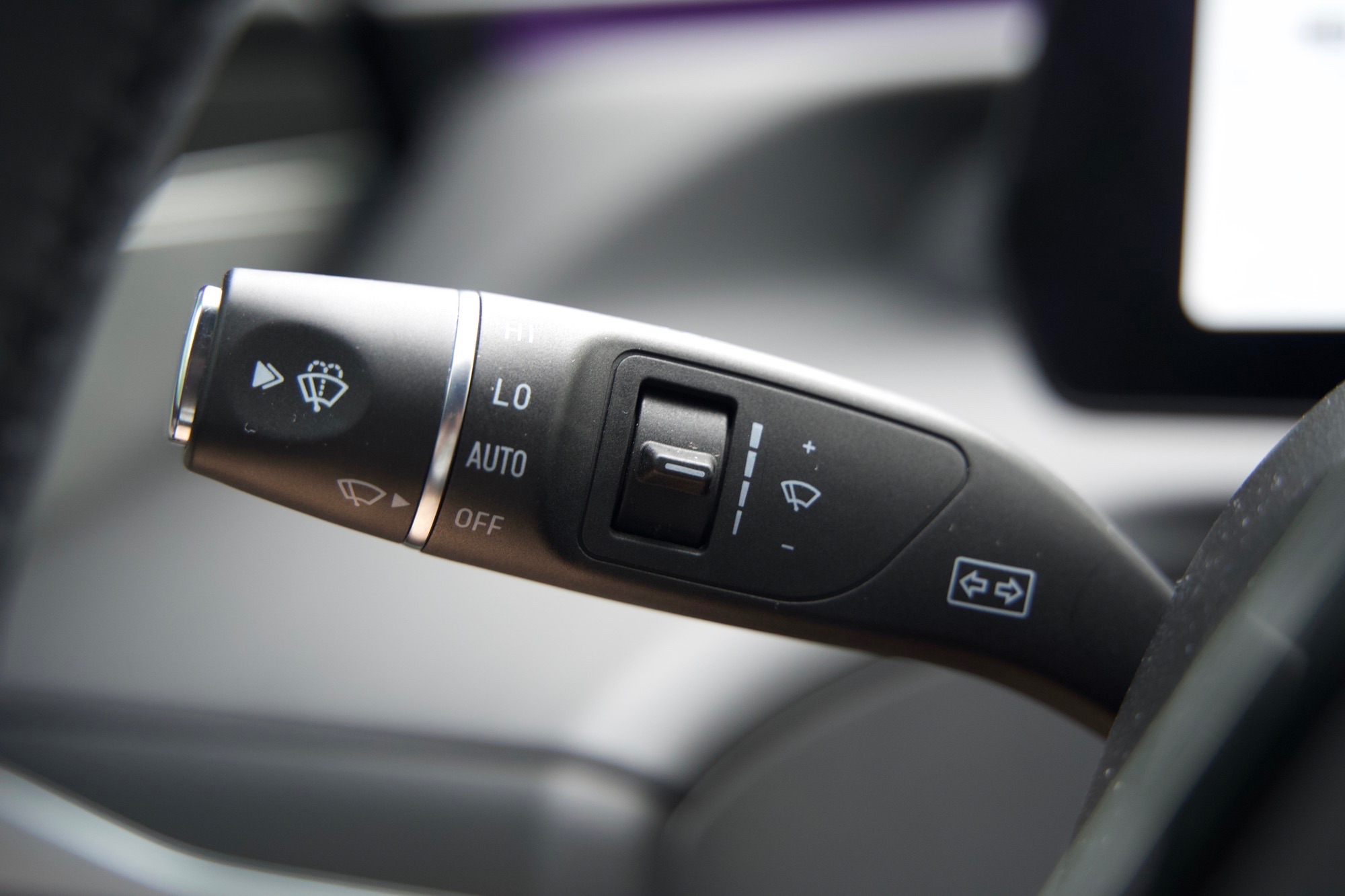
The two screens inside the car remain the same as the older model, with the instrument panel screen measuring 10.25 inches and the central control screen measuring 14.96 inches. The actual upgrade lies in the chip: the previous model featured a Qualcomm 820A automotive chip, while the new model comes with an upgraded Qualcomm Snapdragon 8155 chip.


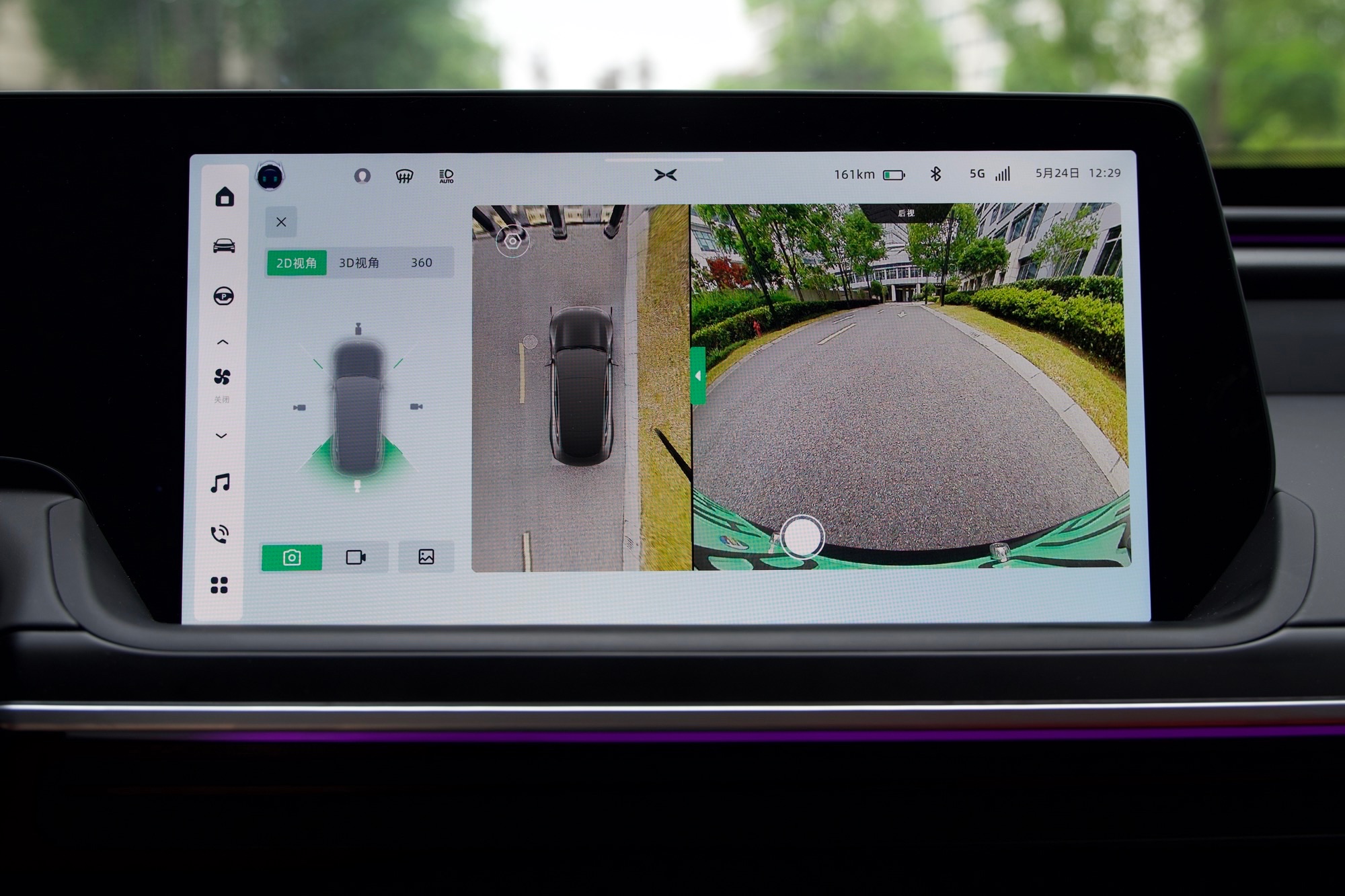 In terms of performance, the 8155 shows a significant improvement over the 820A, as the latter is a chip released in 2016 and is quite outdated.
In terms of performance, the 8155 shows a significant improvement over the 820A, as the latter is a chip released in 2016 and is quite outdated.
In terms of smoothness, the new in-car system is almost as smooth and easy to use as the old one, with virtually all car functions integrated on this screen. From an ergonomics perspective, I have a minor complaint: it’s inconvenient to tap the screen’s bottom edge with your finger, as your hand always gets blocked by the center console, which was also an issue with the old P7.
Below the center console, there is a convenient spot for placing your phone, but only the left side offers wireless charging, while the right side does not, which is consistent with the G9 model.

Hence, co-drivers in need of charging must connect a charging cable. However, both charging ports are closer to the driver’s side, seemingly giving higher priority to the driver’s charging needs.
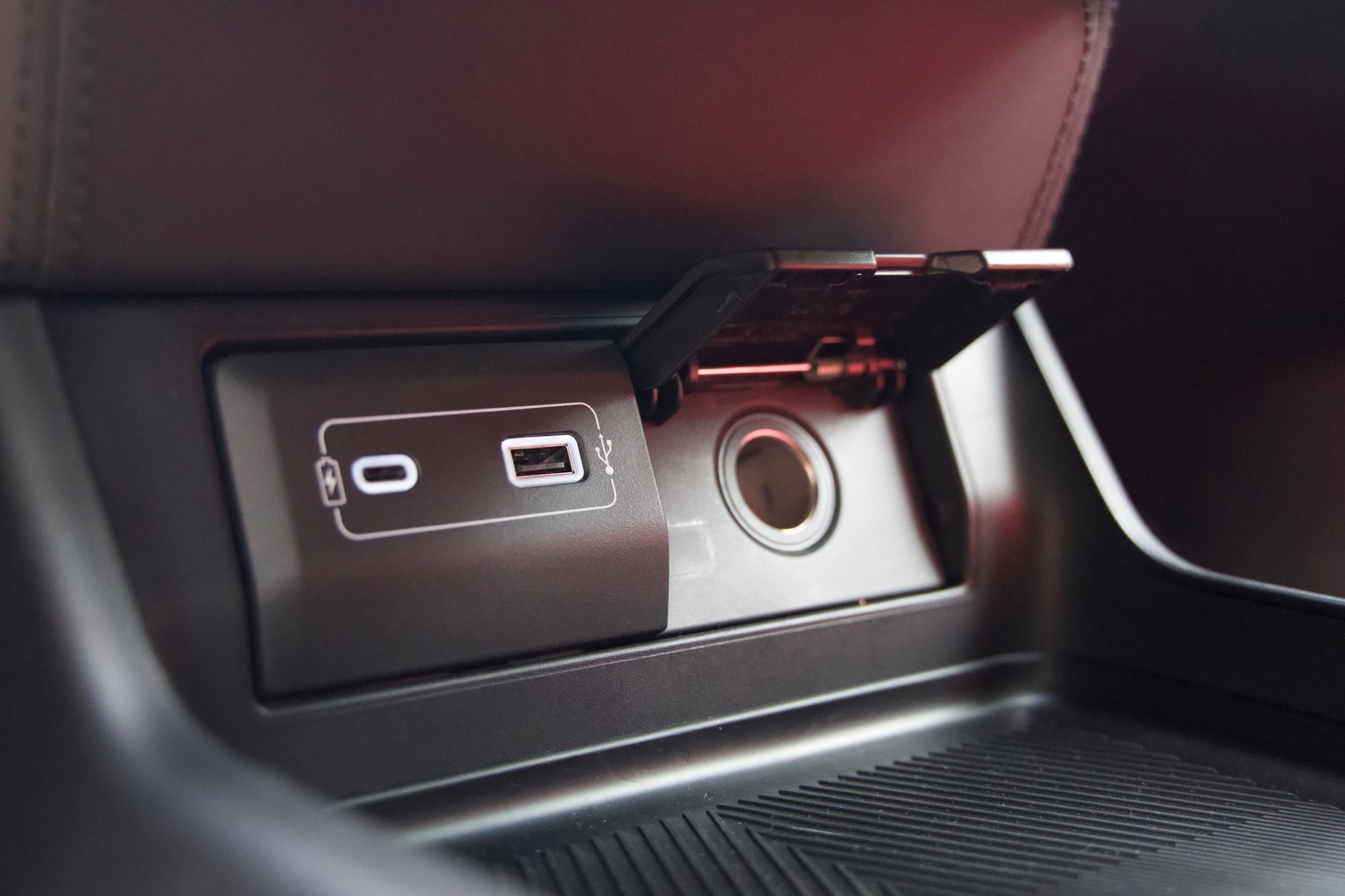
The storage space under the central armrest is not particularly large, especially due to the fragrance system occupying some space. A better feature is the storage area’s lid that can be opened to the left or right for easy access by both the driver and co-driver.
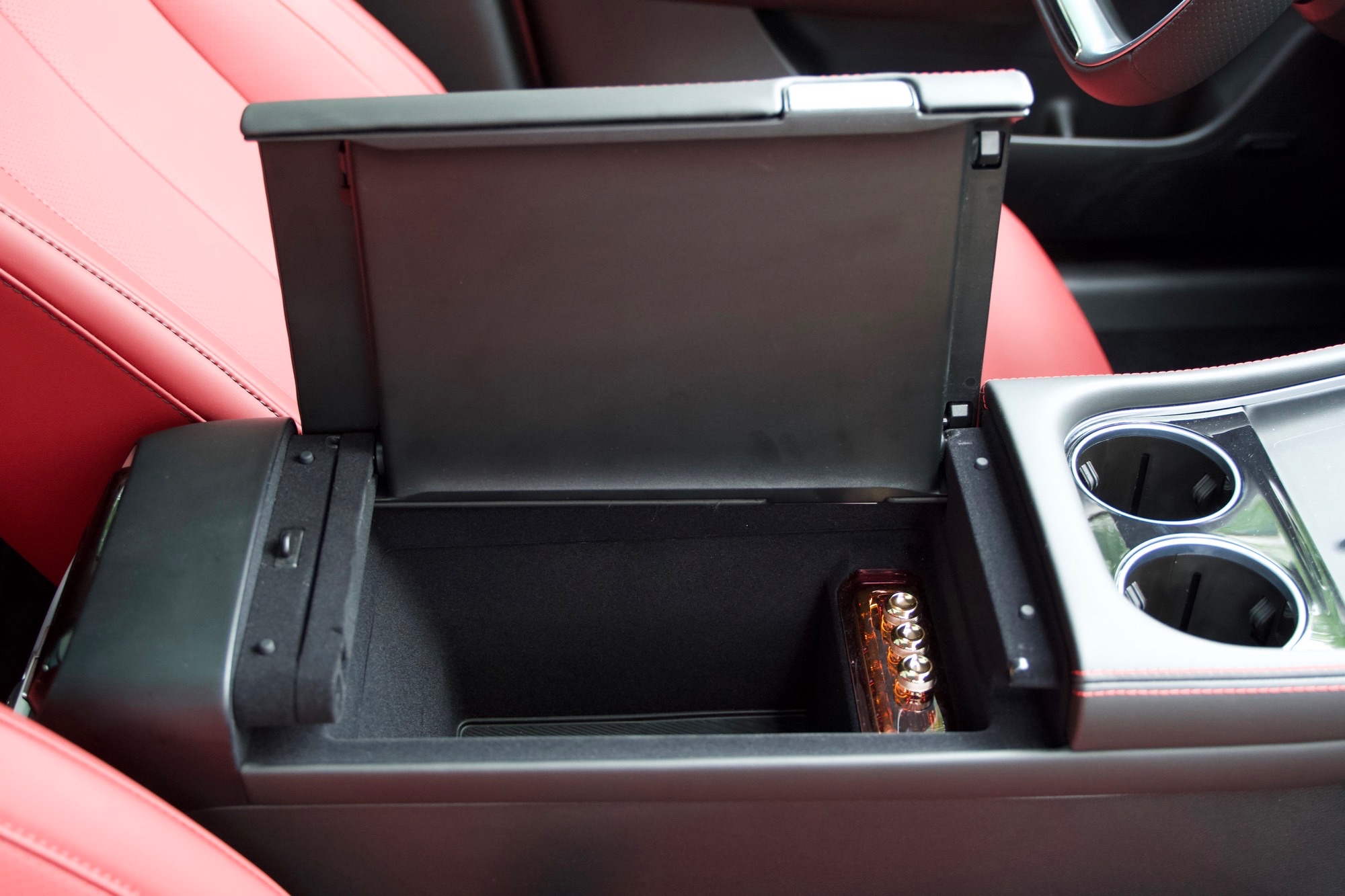
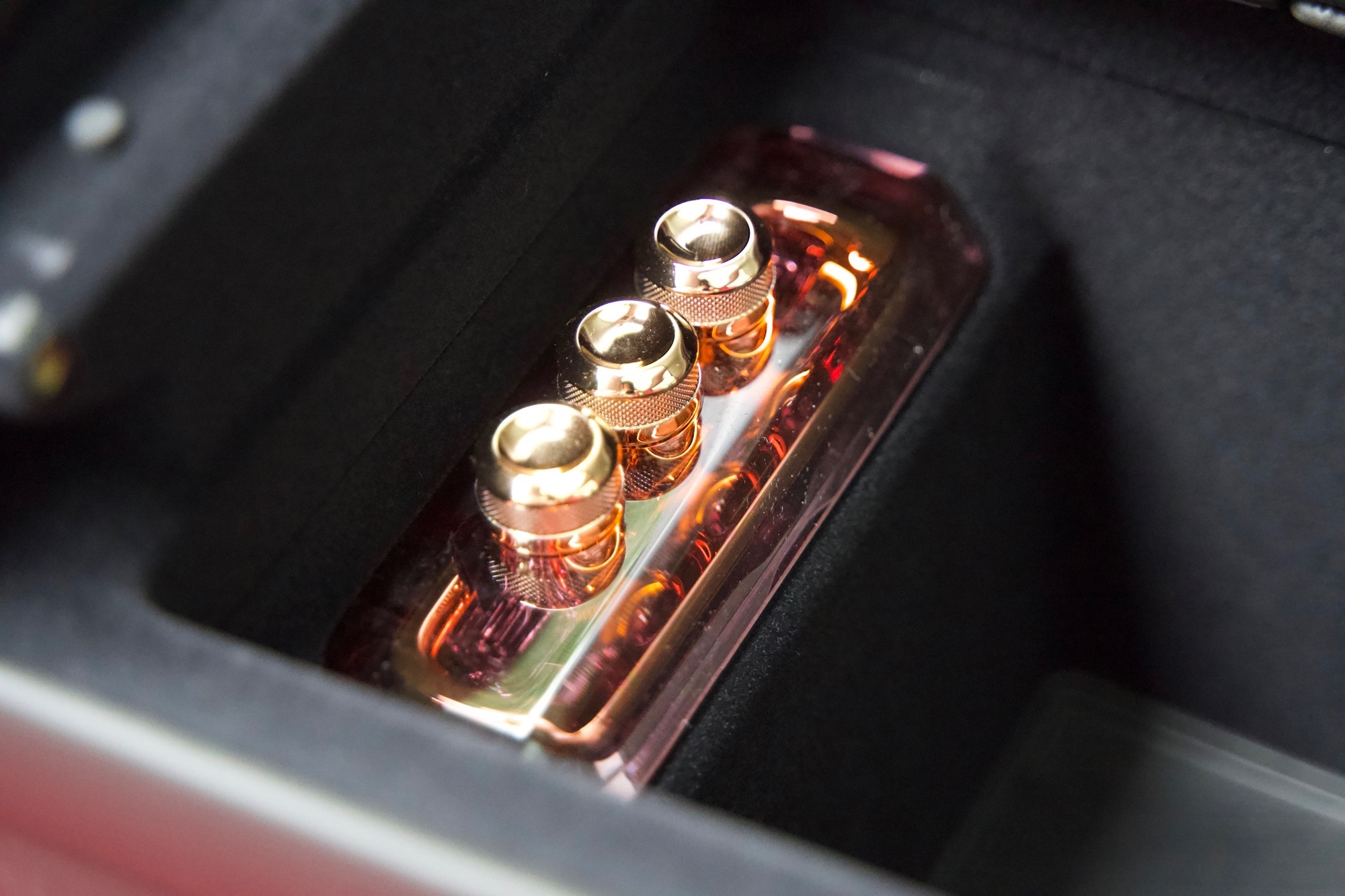
XPeng P7i’s seats are all equipped with Nappa genuine leather, smooth enough with a nice touch. Yet, due to the car’s more sporty positioning, the seats are not soft, with sports seats focusing more on wrapping. During the test in early summer, turning on the seat ventilation prevented stuffiness. In winter, the seat heating function will also keep you warmer.
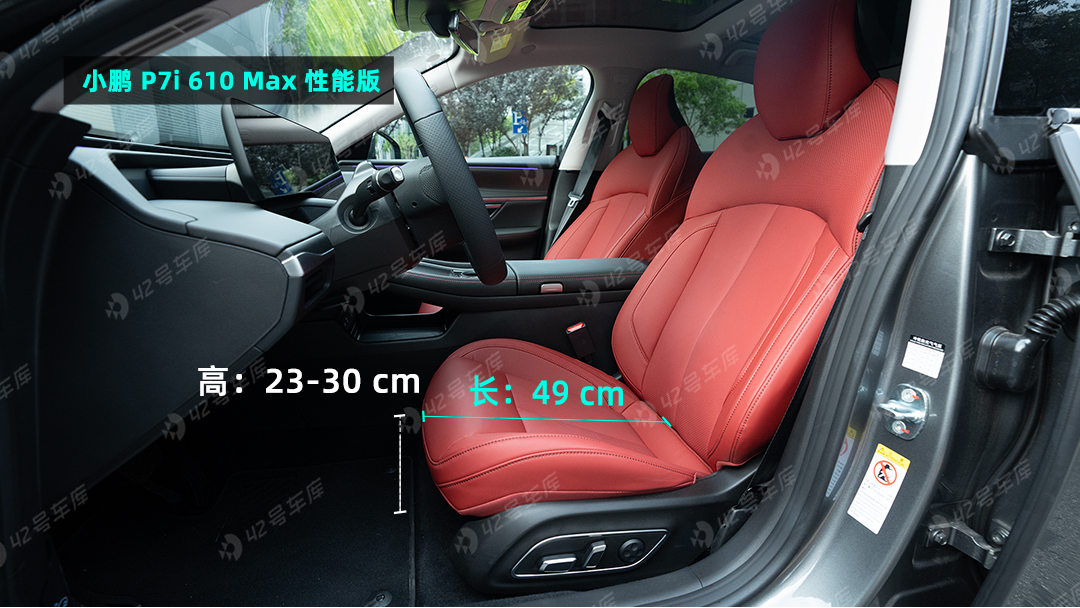

Moving to the rear seats, the material is almost the same as the front row, but for someone with a slightly overweight build like myself, the comfort level is not as high. You can refer to the photos for rear seat space performance.
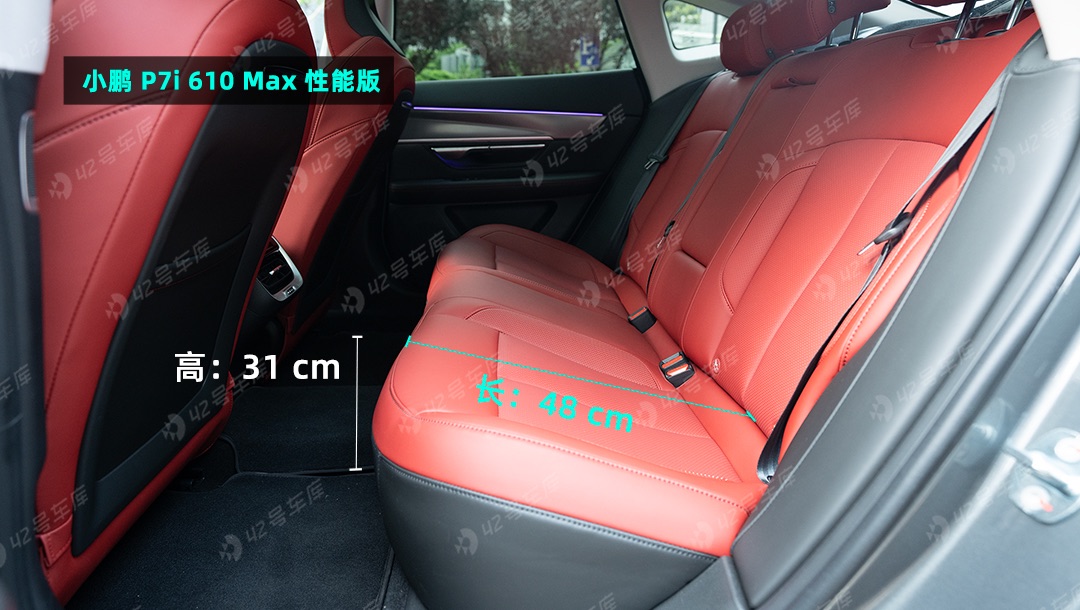



The rear row also features one USB-A and one USB-C port, satisfying the needs of different users.

Next, let’s discuss the audio system, which is also upgraded in the XPeng P7i. The P7i 610 Max model comes standard with a Xopera audio system, and a Dynaudio Confidence series system can be added for an additional 6,000 yuan. However, both audio systems support 7.3.4 Dolby Atmos and come with 20 speakers and independent amplifiers.

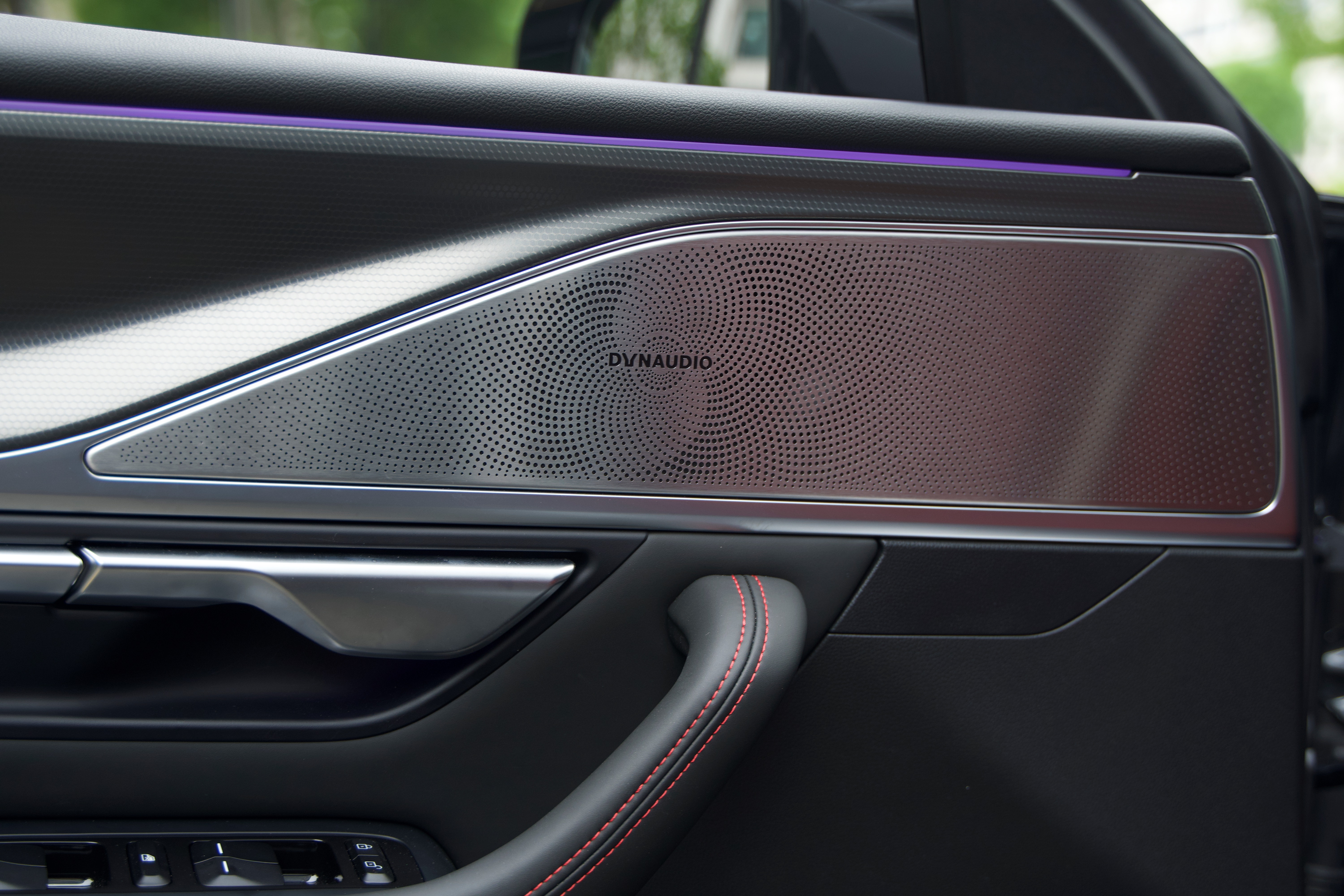

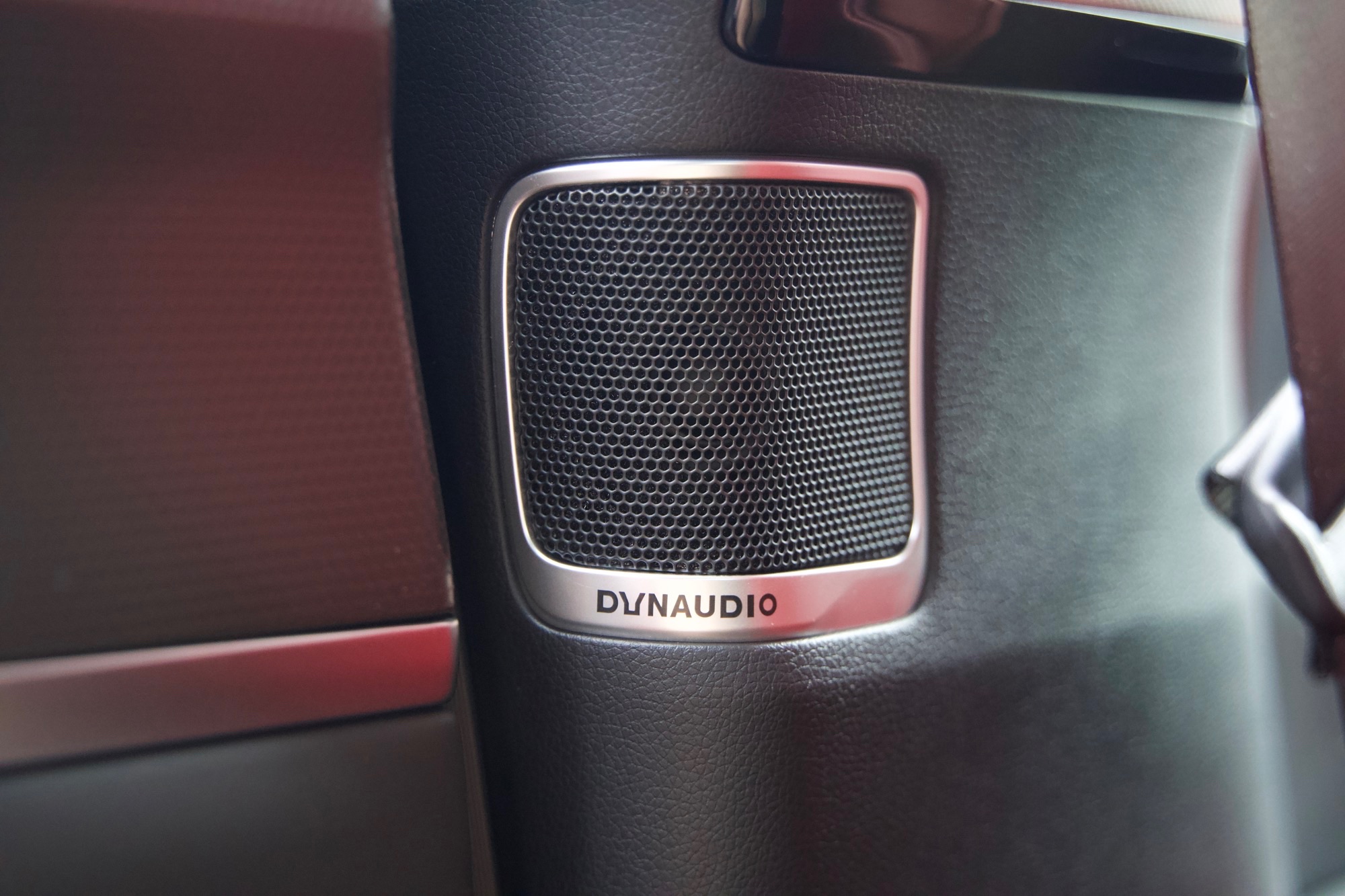
In terms of audio quality, it meets the standard for the P7i model. When playing Dolby Atmos content, the sound has a better sense of direction. At the same time, it is not recommended to use Bluetooth from a phone for streaming, as the audio quality might be inferior compared to in-car playback.
Moving on to the trunk, the overall space is very well-organized. If the rear seats are folded down, there is even more storage space available.
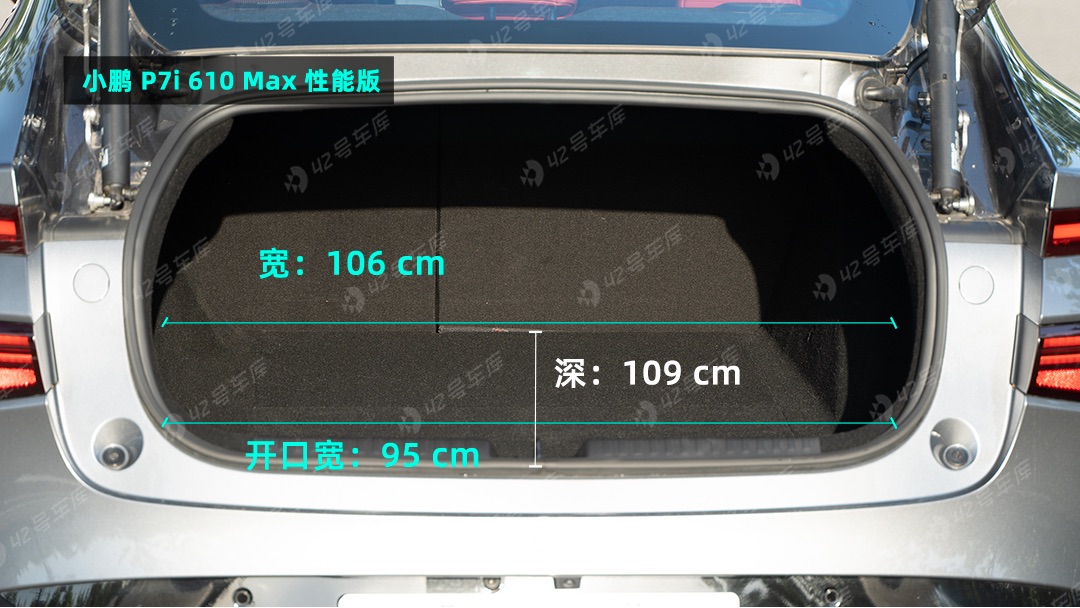
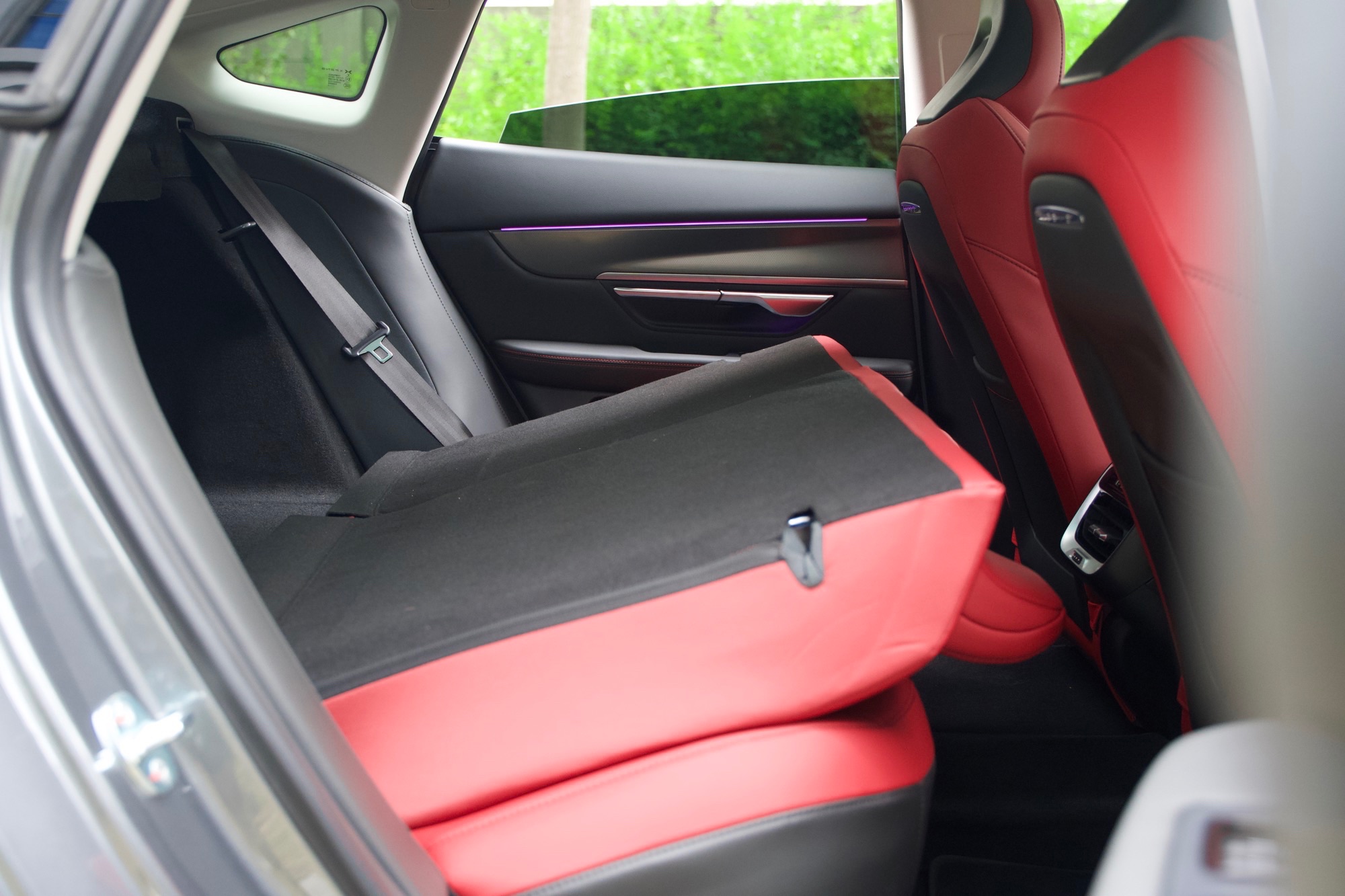

However, the XPeng P7i does not have a front trunk. When opening the front hood, there is a tidy plastic panel without any storage functions.
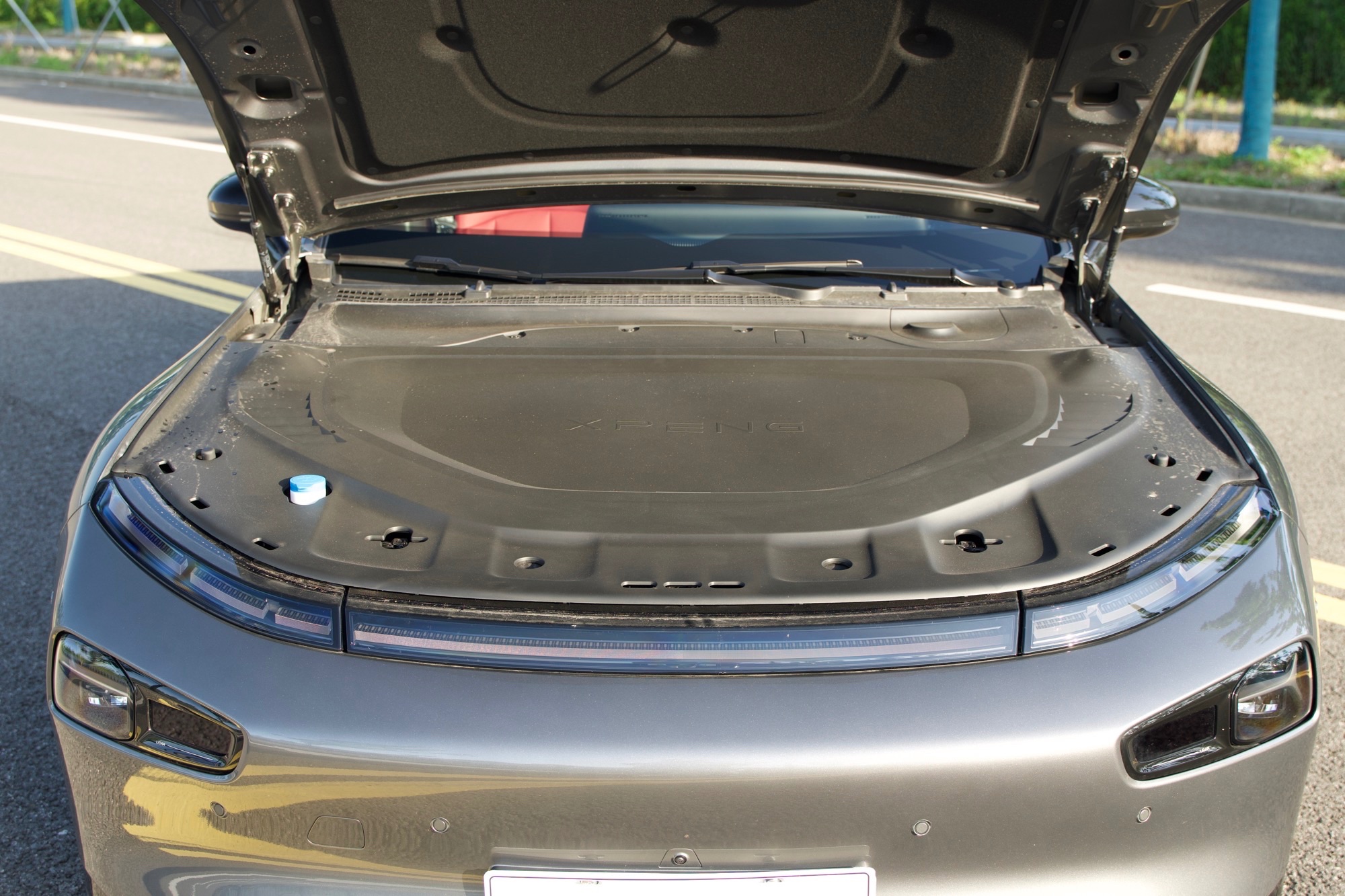
Driver Assistance
During the ten-plus days of driving the XPeng P7i, I always prioritized using driver assistance whenever possible.
The sensor configuration is as follows:
- 2 LiDAR sensors
- 12 cameras (including DMS camera)
- 5 millimeter-wave radar sensors
- 12 ultrasonic radar sensors


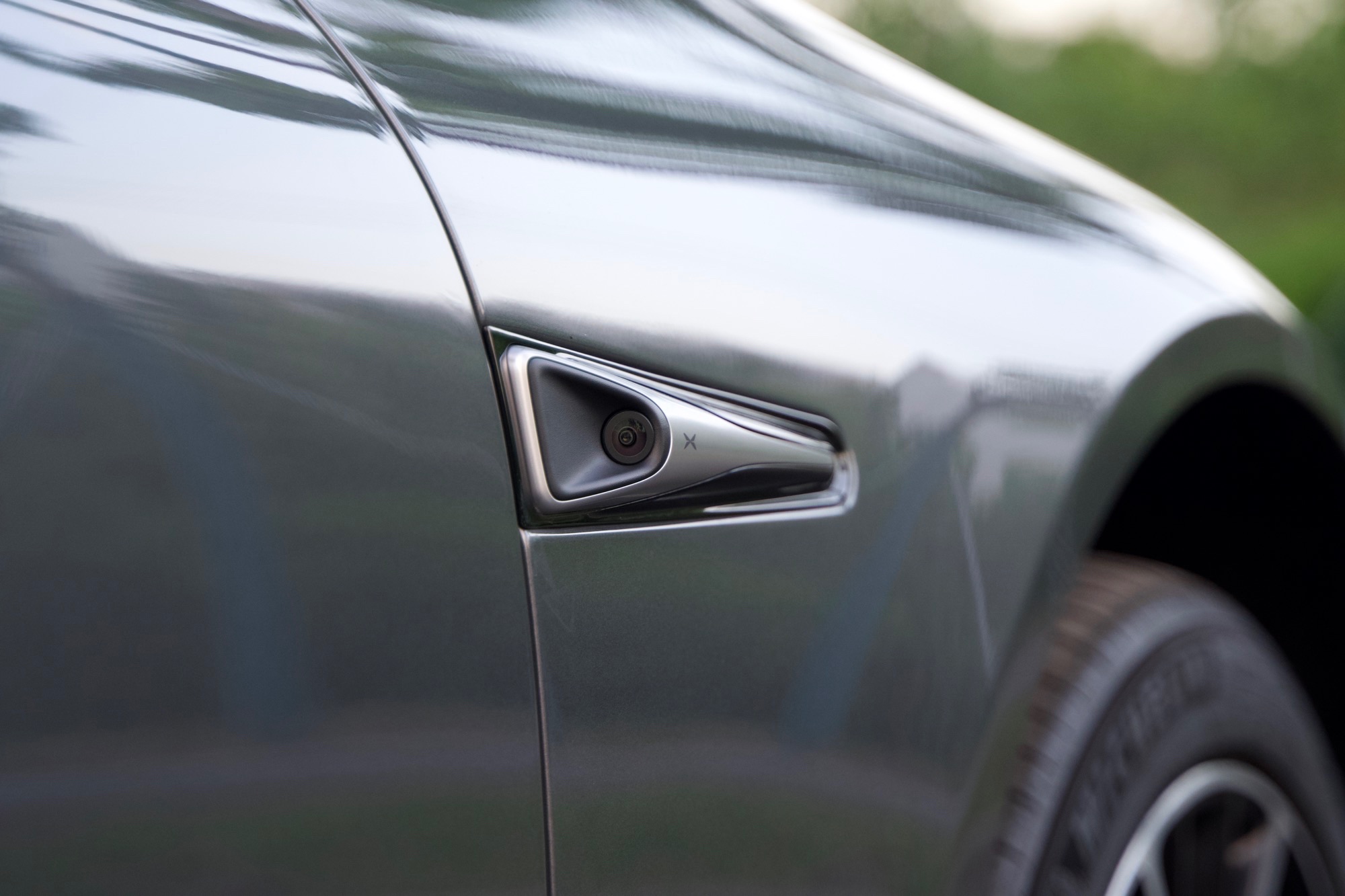

The auxiliary driving chip uses two NVIDIA Orin chips with a combined computing power of 508 TOPS. This set of auxiliary driving hardware is on par with the G9.
After activating the NGP navigation-assisted driving function on the highway, the XPeng P7i can follow the navigation route. The NGP, featuring high-precision positioning and high-definition mapping, has near-perfect lane centering capability with slightly cautious acceleration and deceleration for ACC, which might lead to getting cut off in congested sections.
Speaking of on-ramp and off-ramp capabilities, XPeng’s NGP performs relatively well. However, it is recommended to manually drive on or off ramps in dense traffic situations.
In addition, XPeng’s urban NGP function is gradually being made available at this stage. If you are interested, we can cover it in an upcoming 42Mark column.
In Conclusion
In 2020, the XPeng P7 was launched and became a popular model for the XPeng brand. Nearly three years later, driving the XPeng P7i once again might not evoke the same excitement, but it still delivers an outstanding intelligent driving experience – the true essence of what makes it an XPeng.
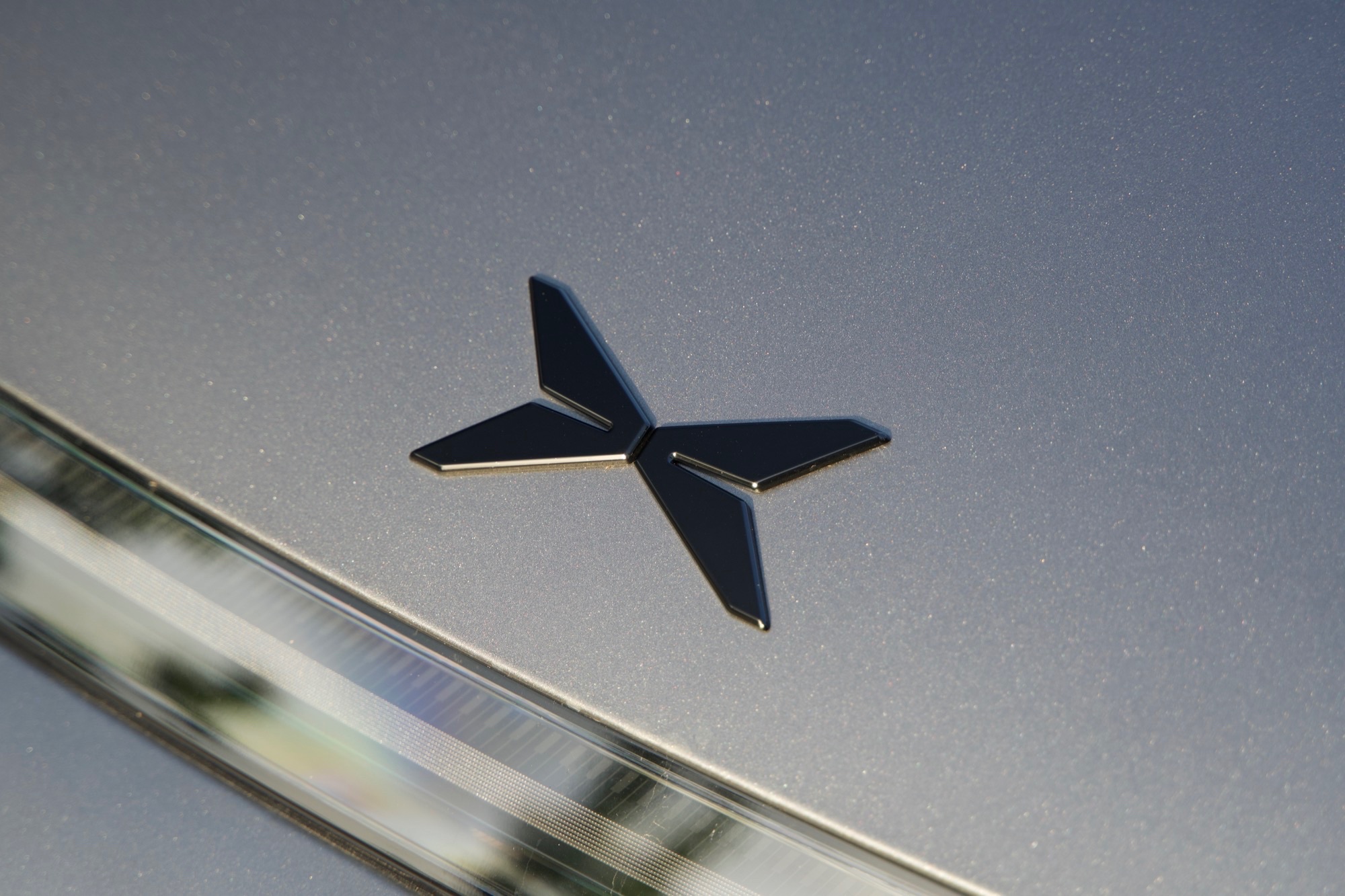
This article is a translation by ChatGPT of a Chinese report from 42HOW. If you have any questions about it, please email bd@42how.com.